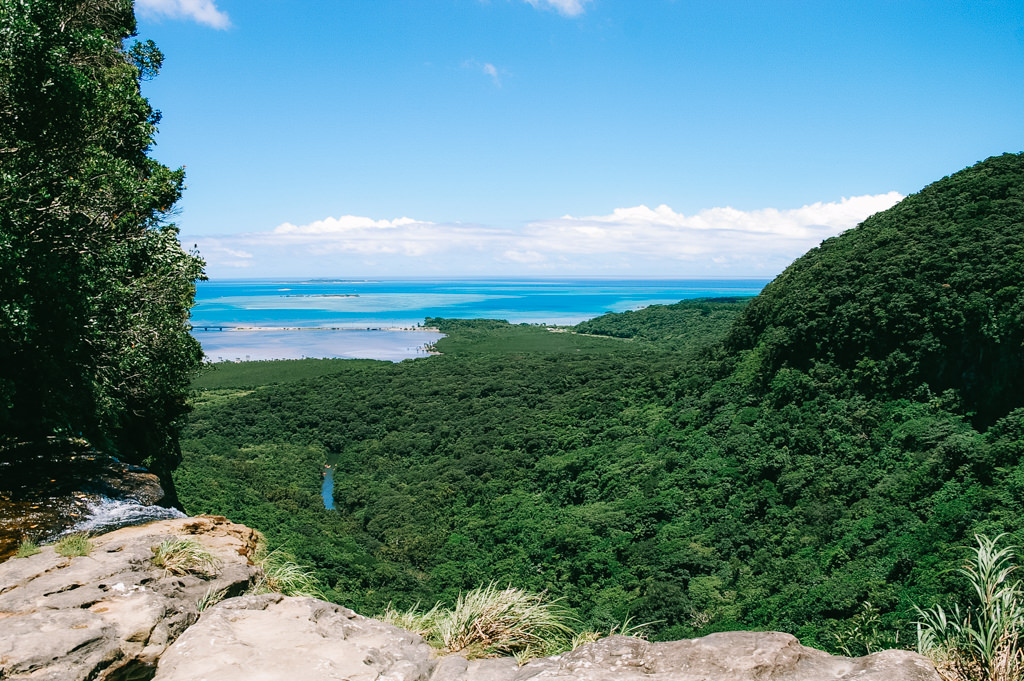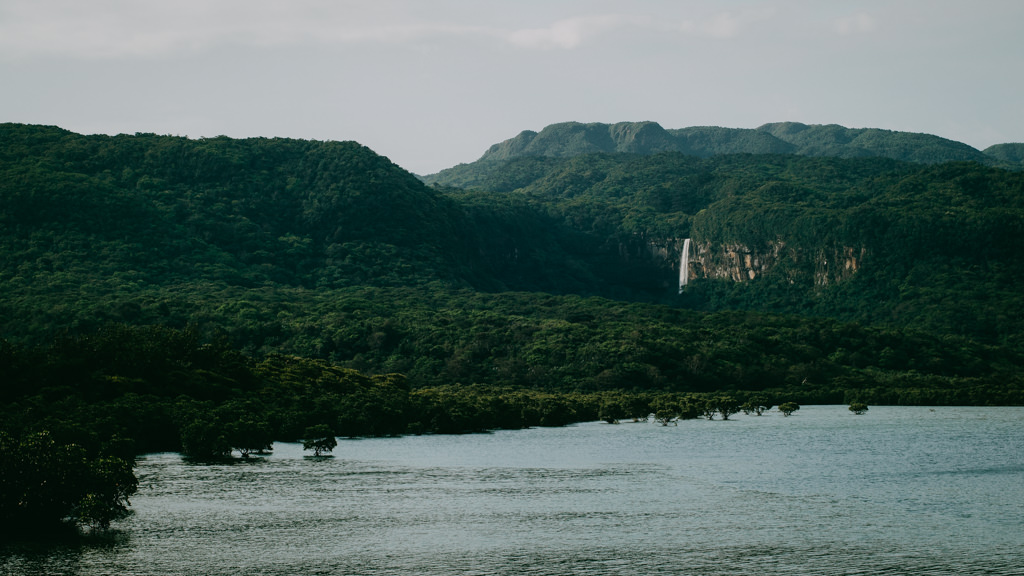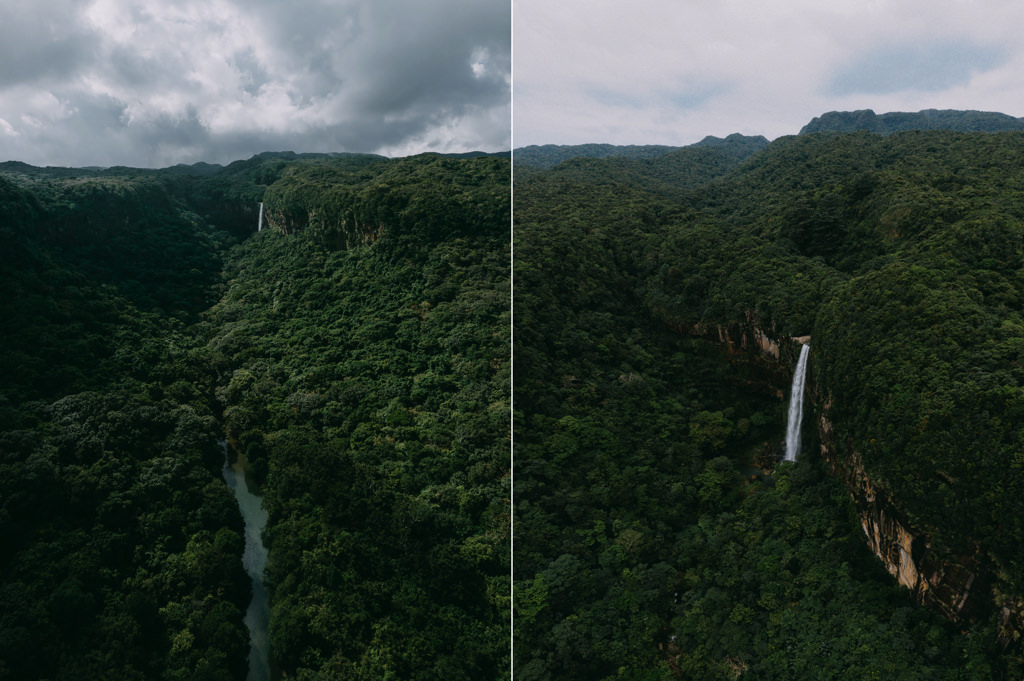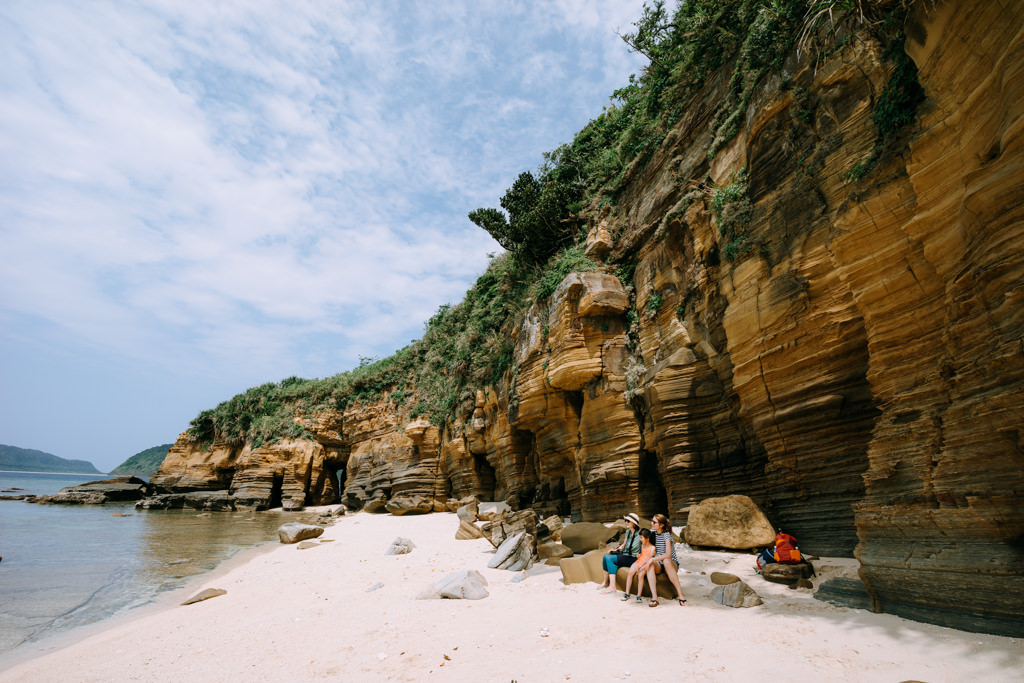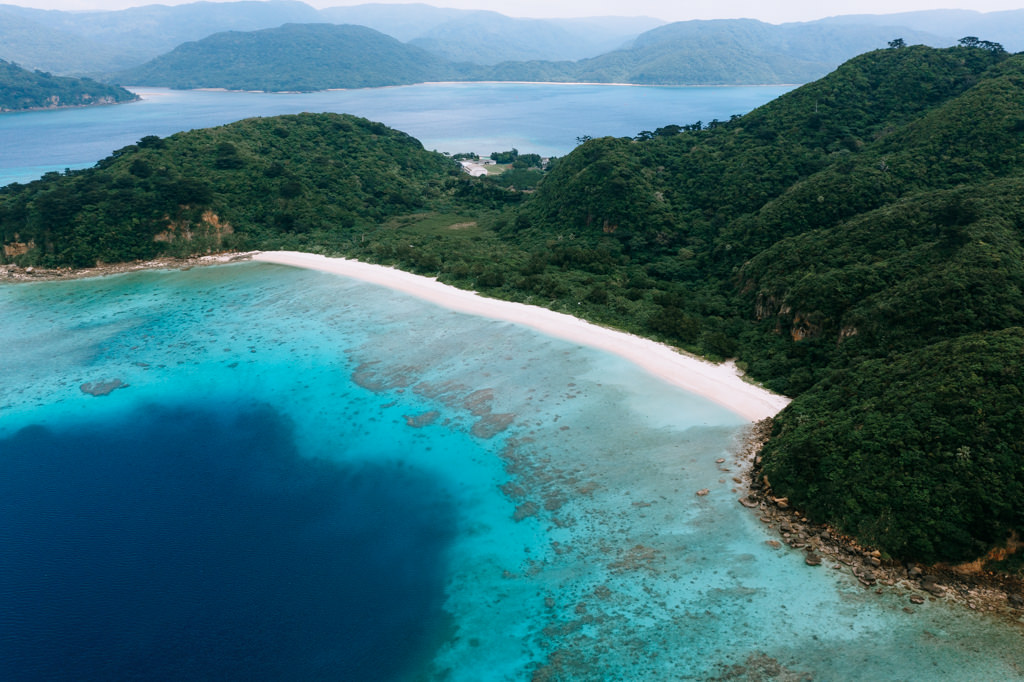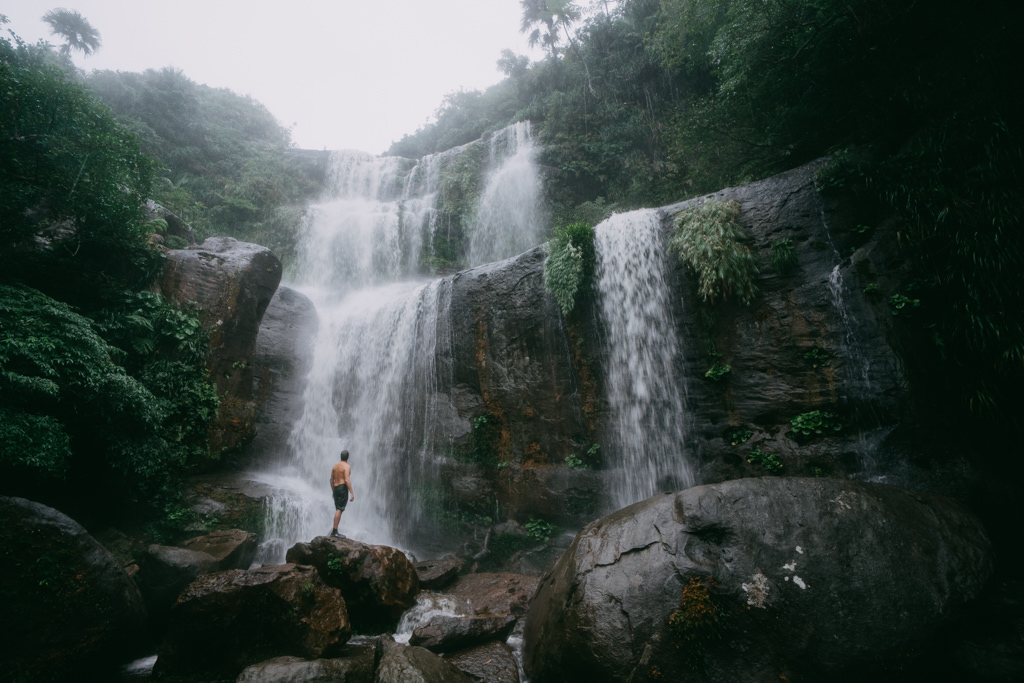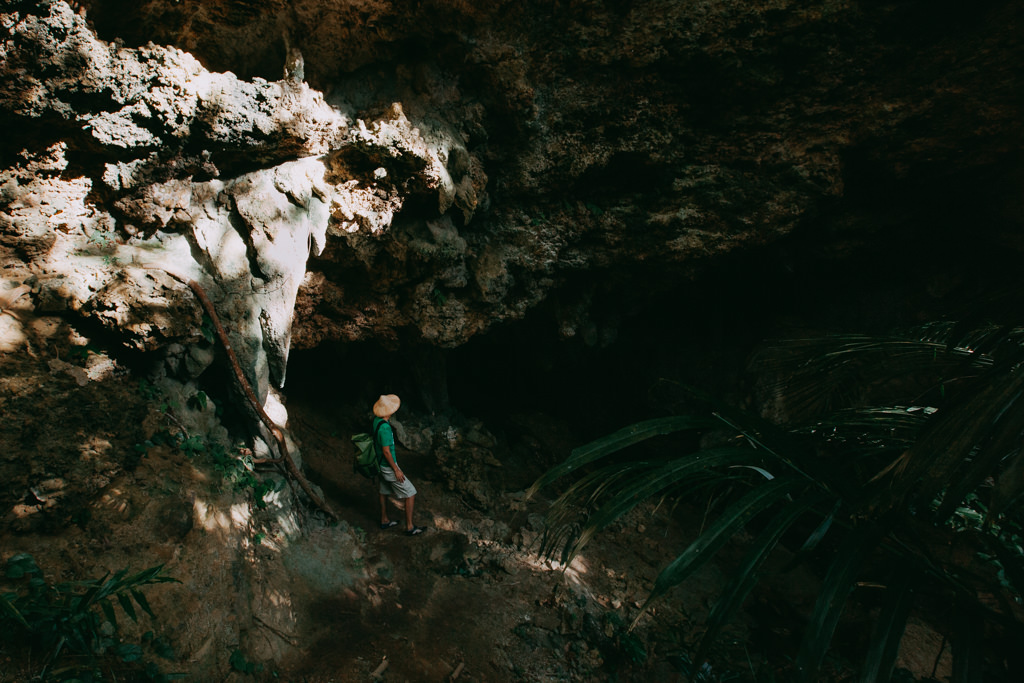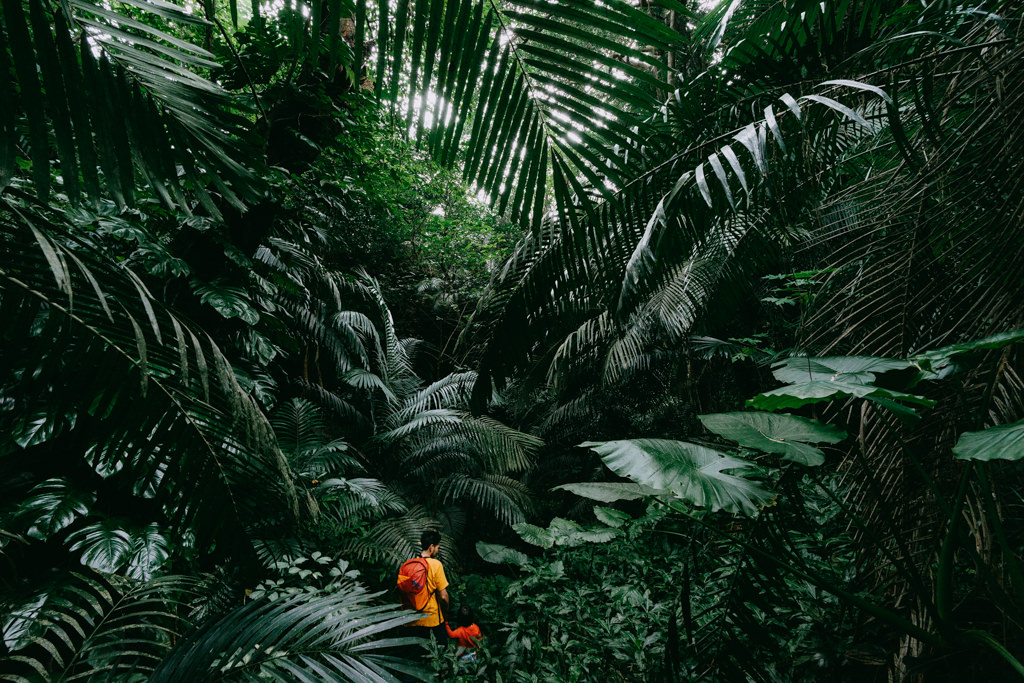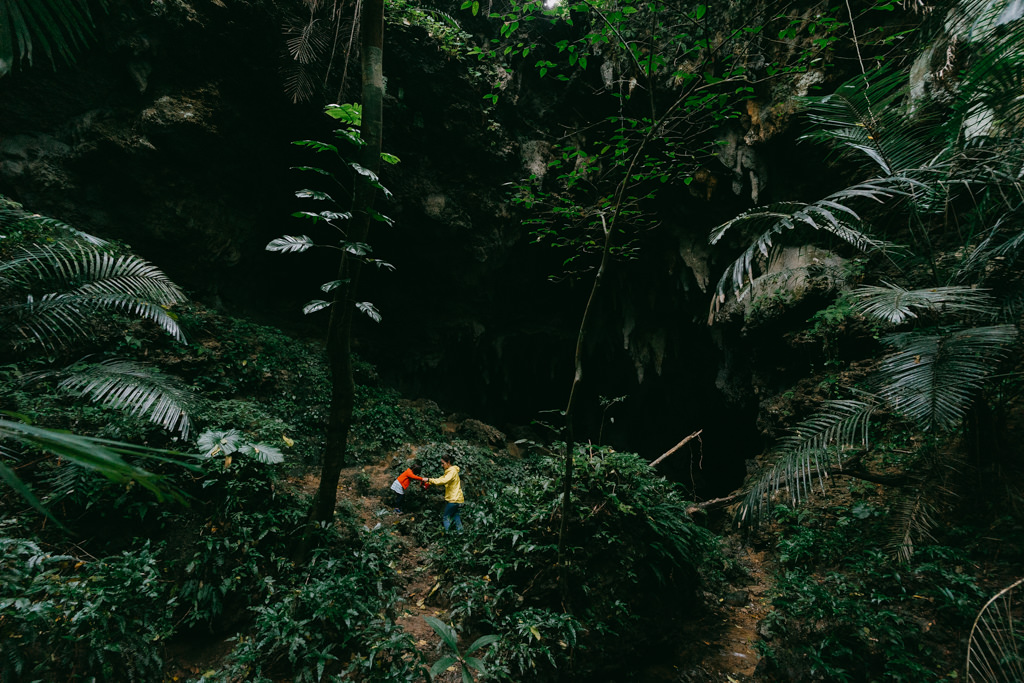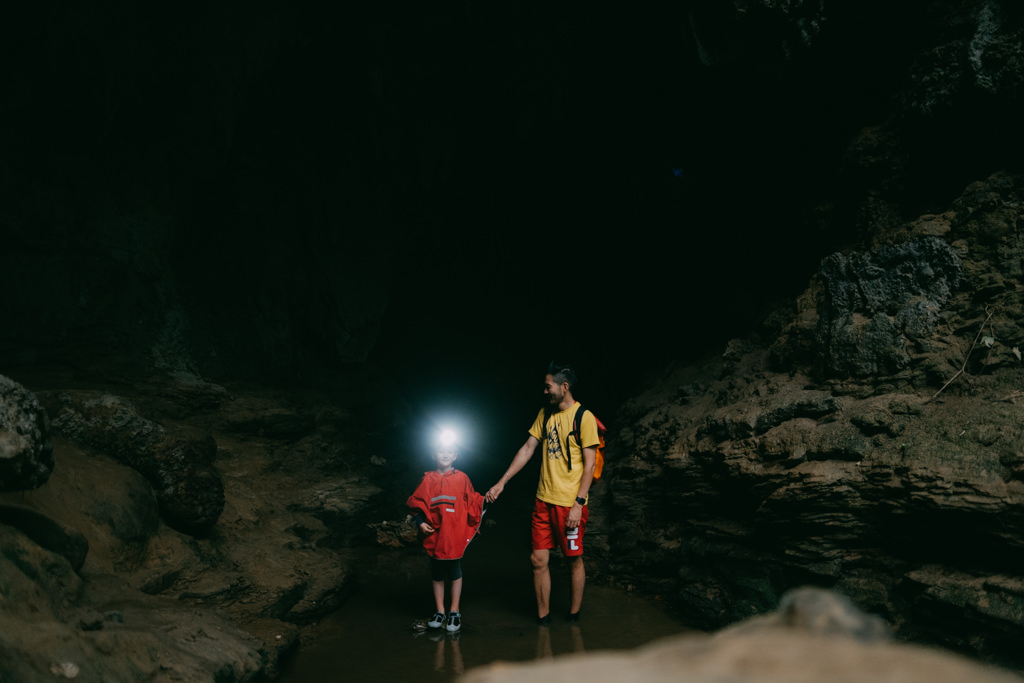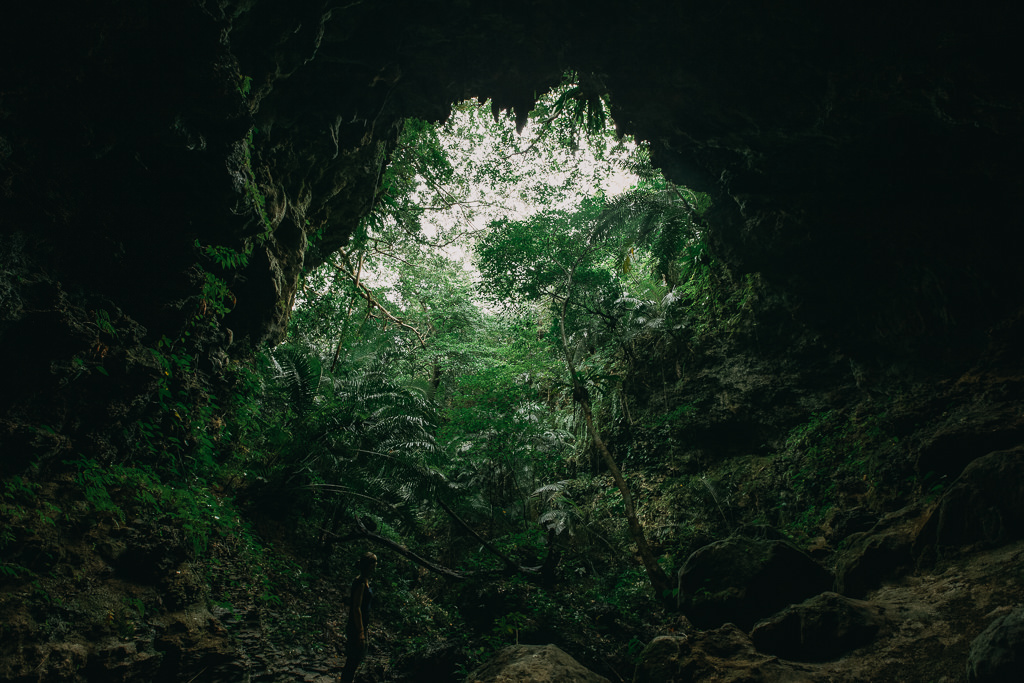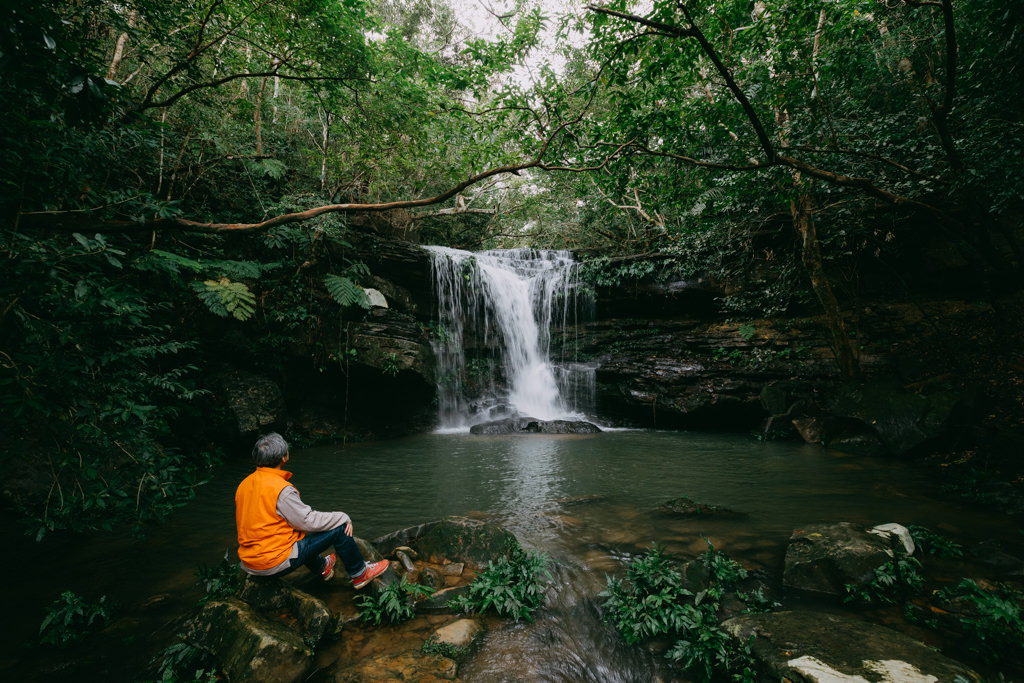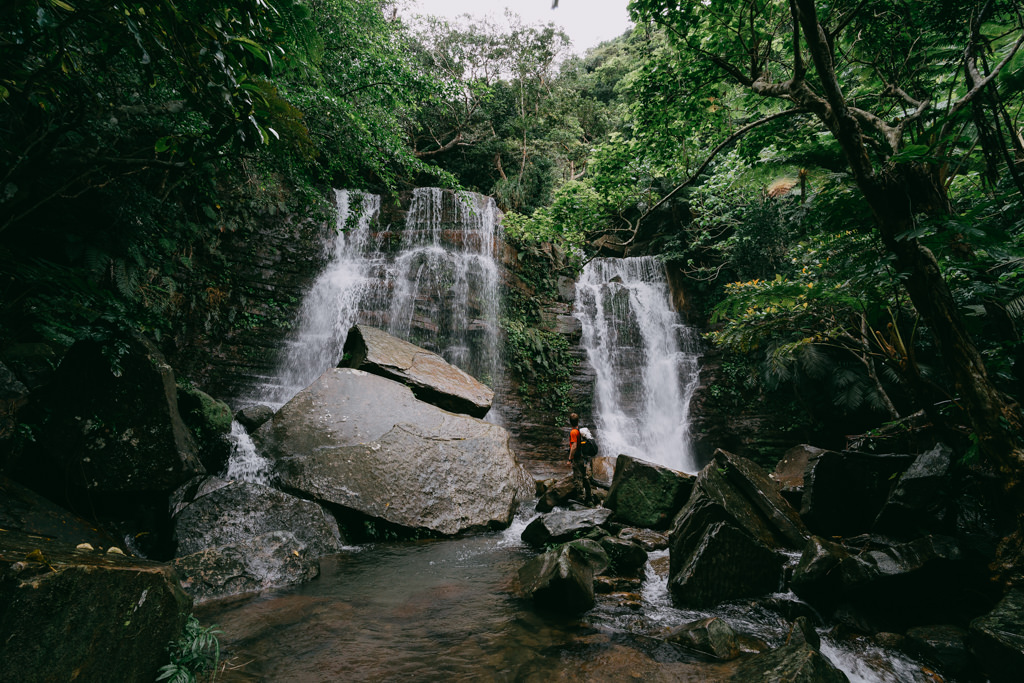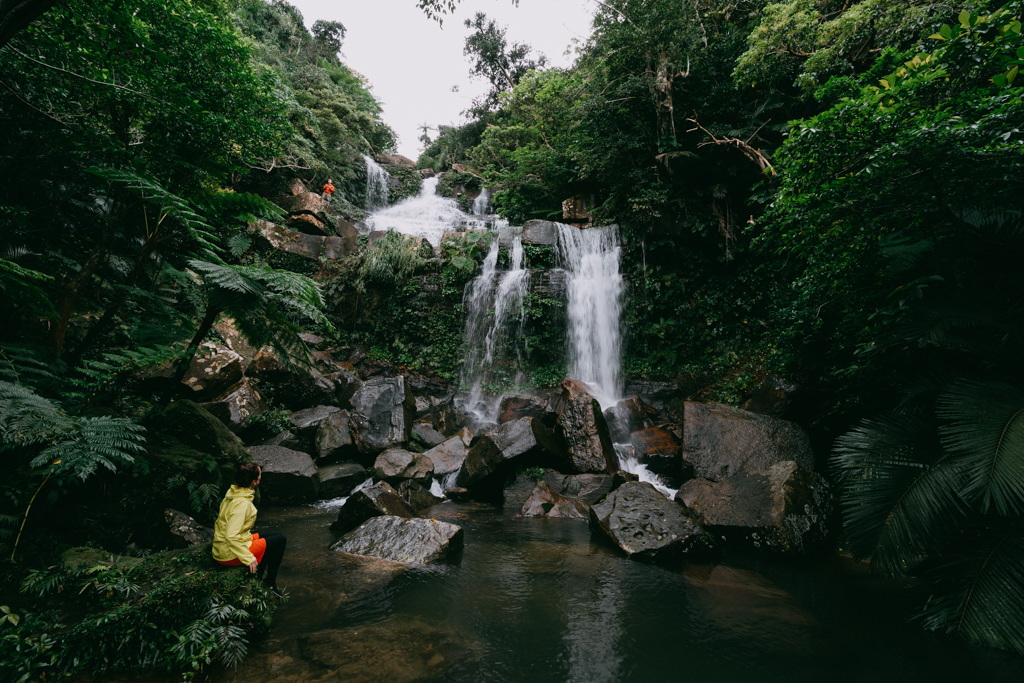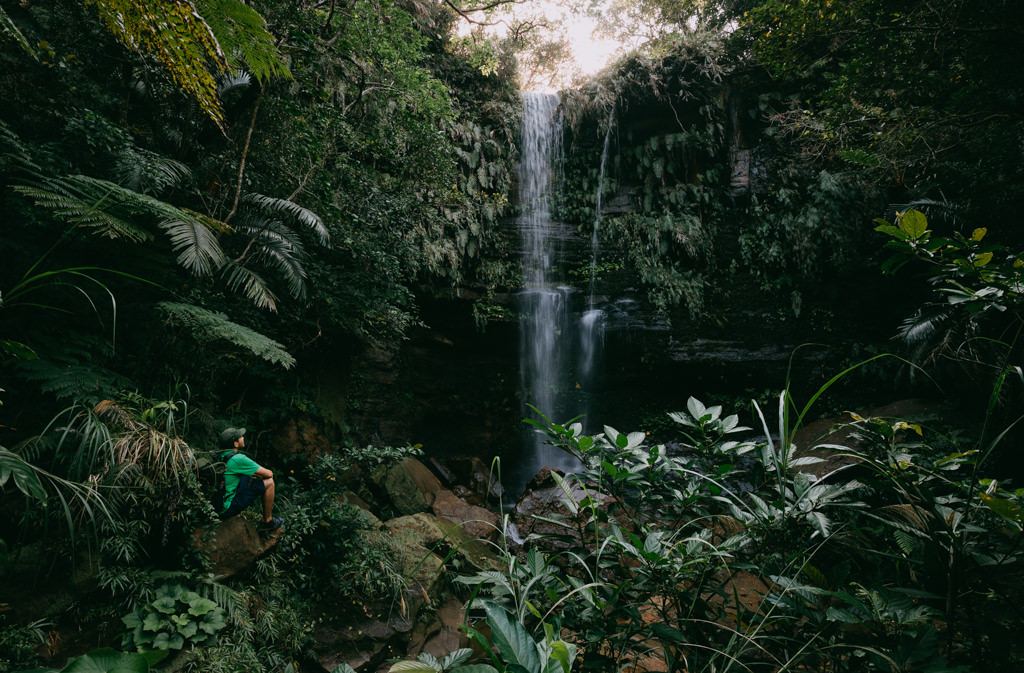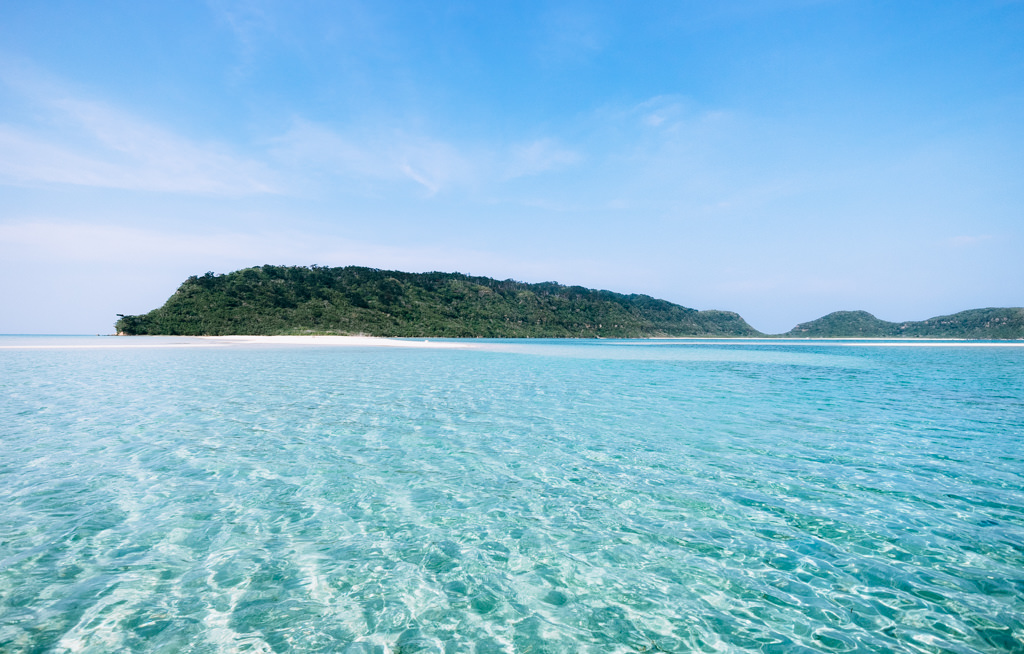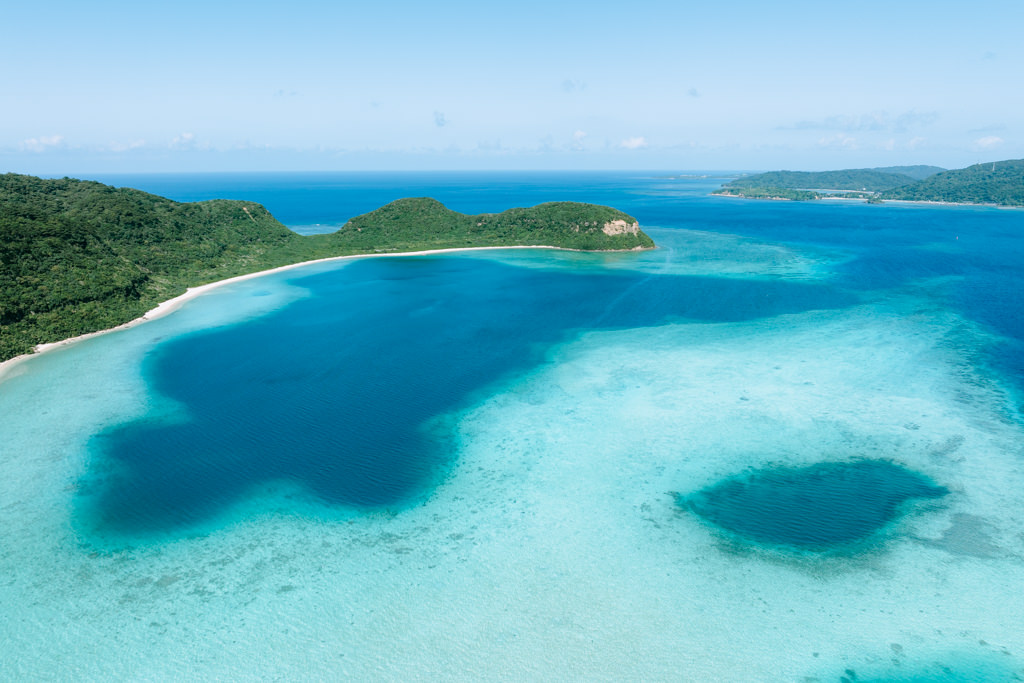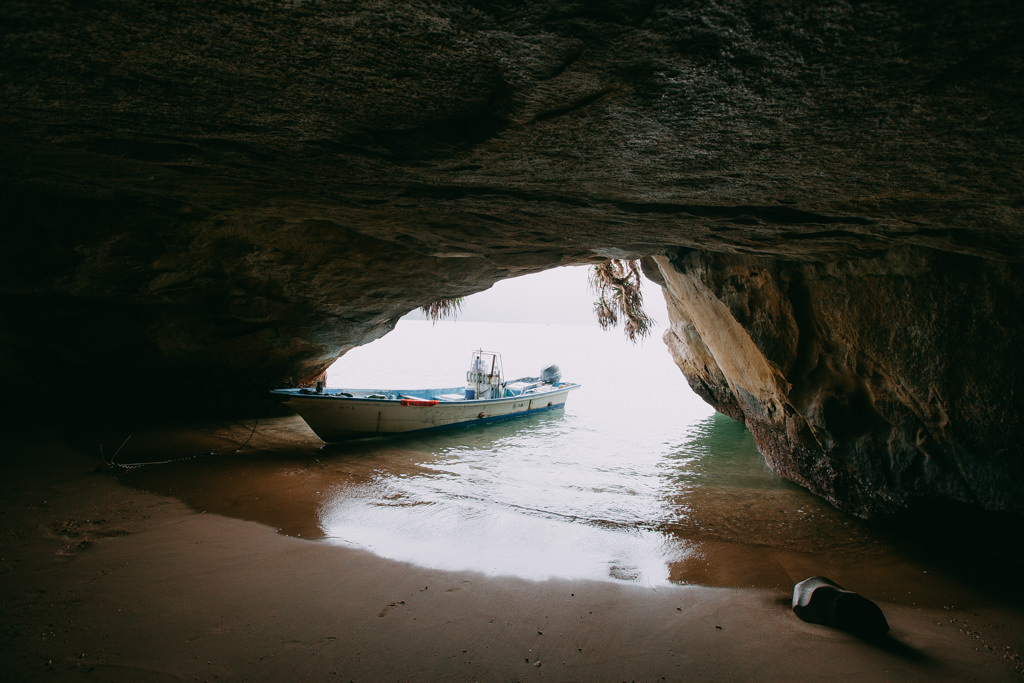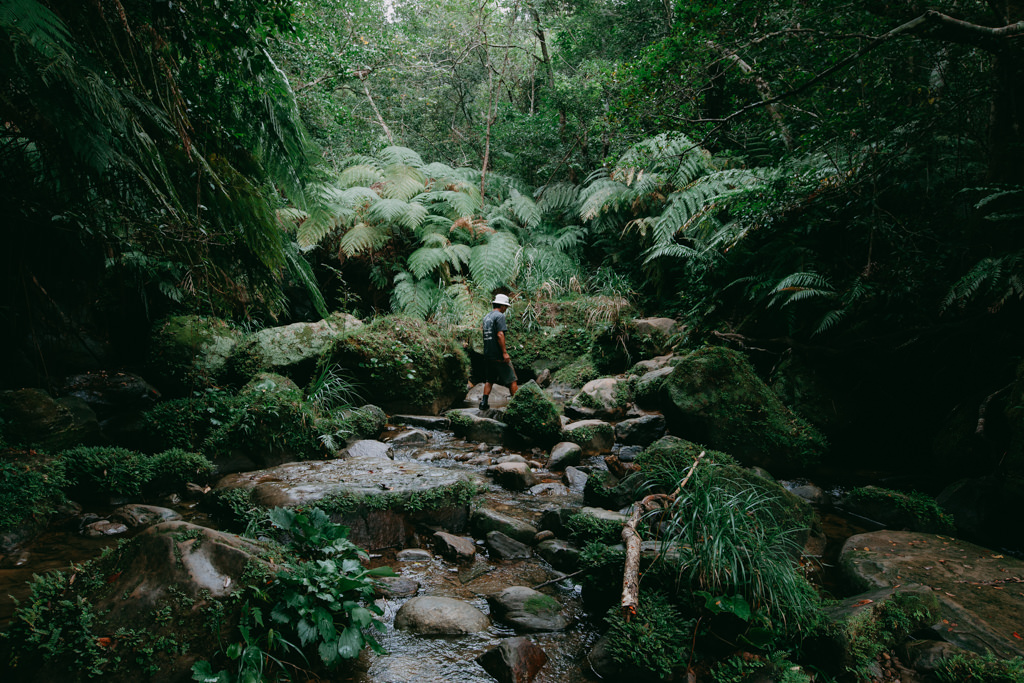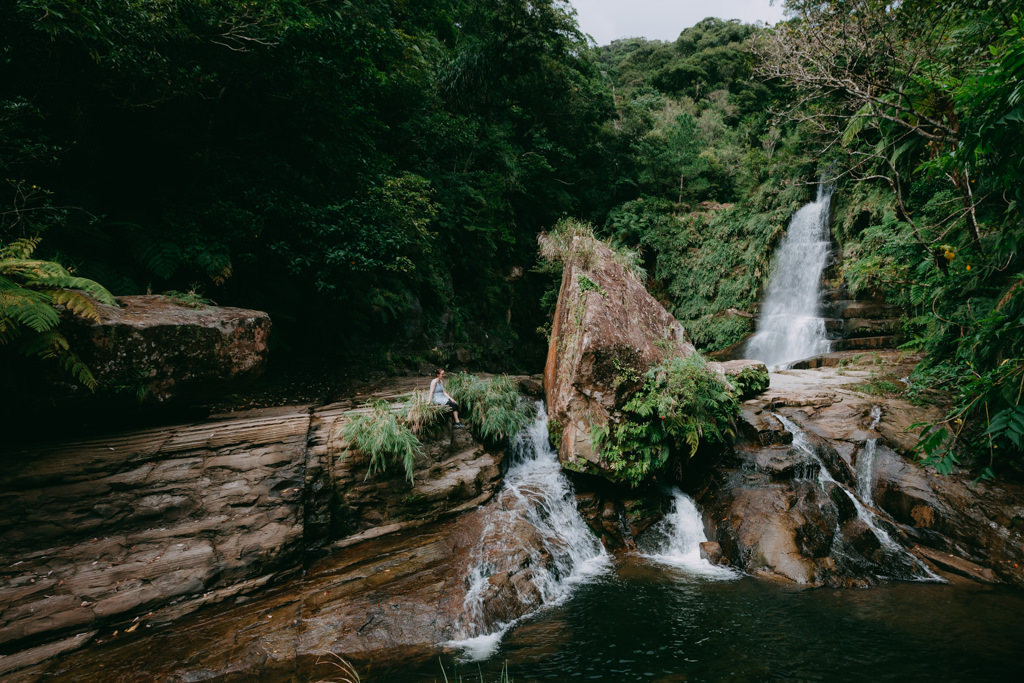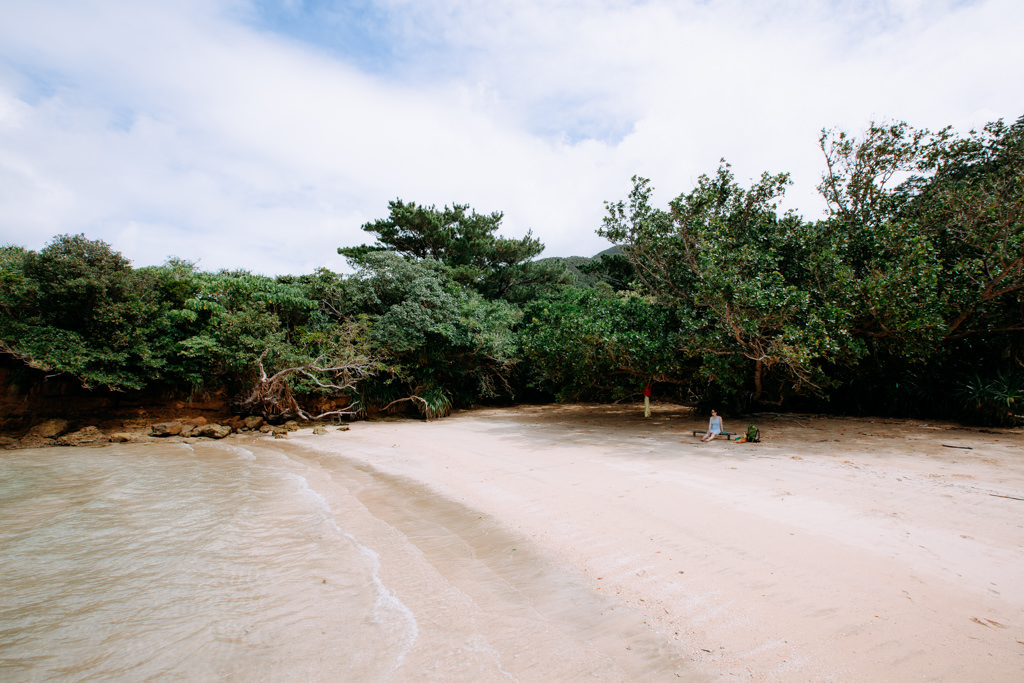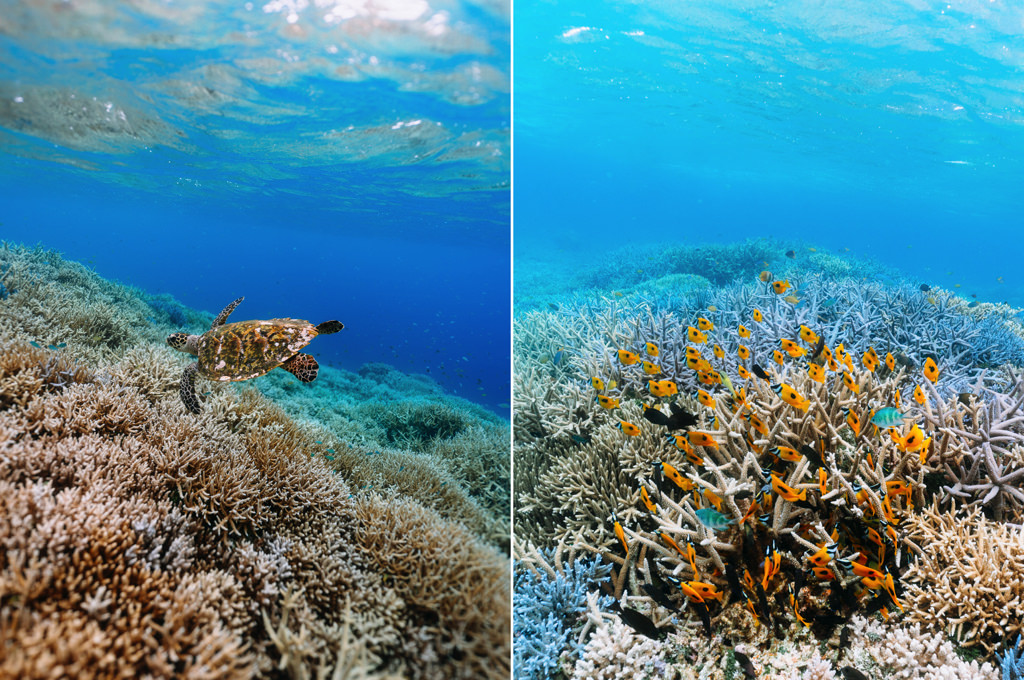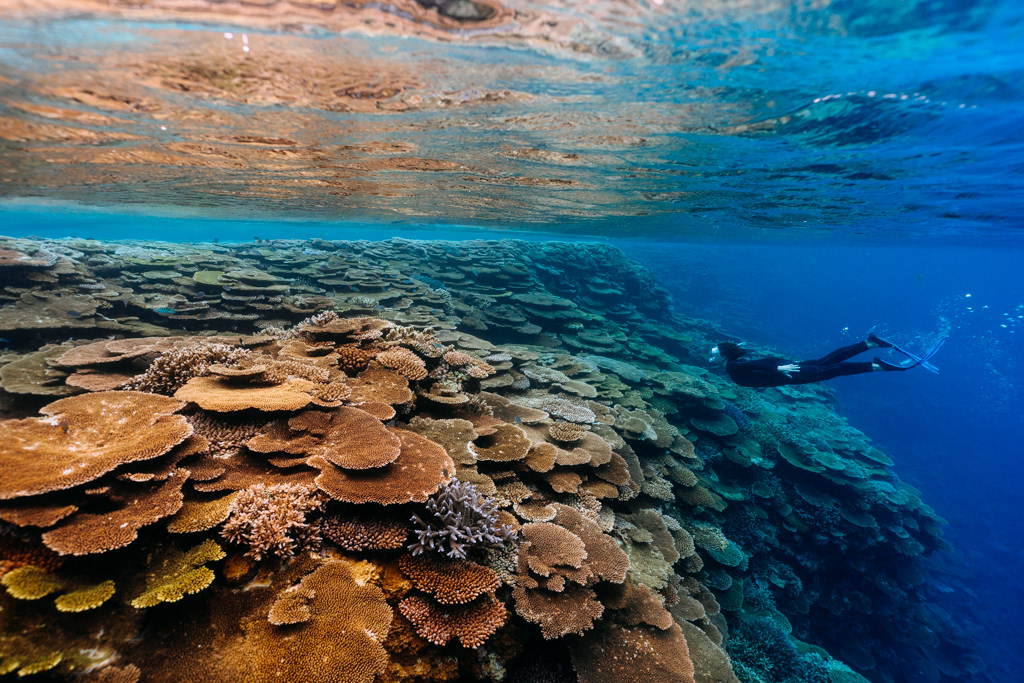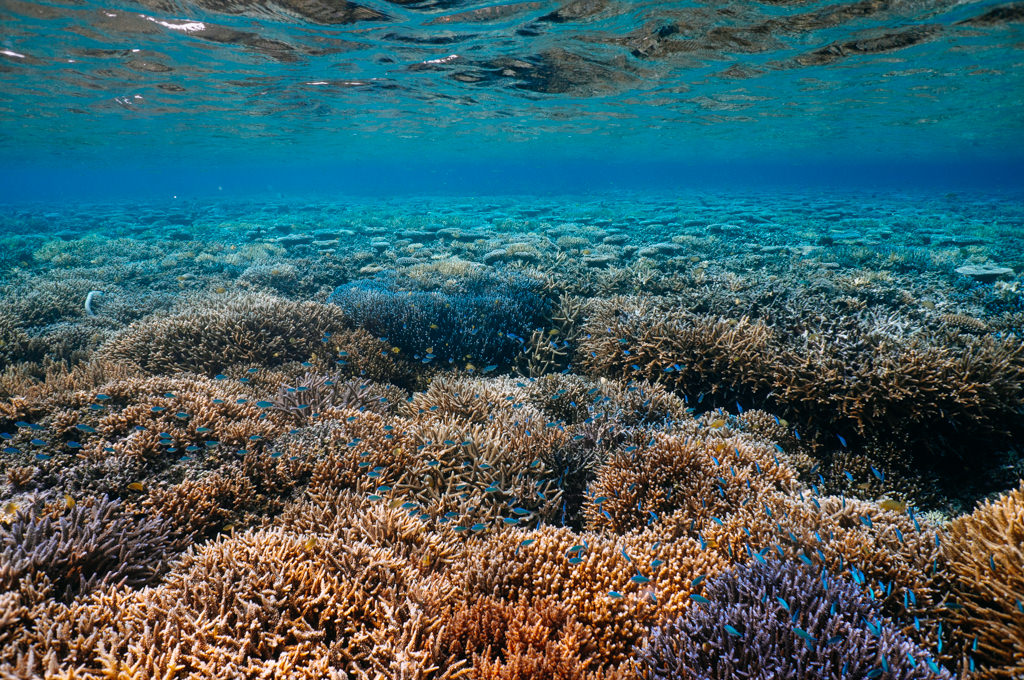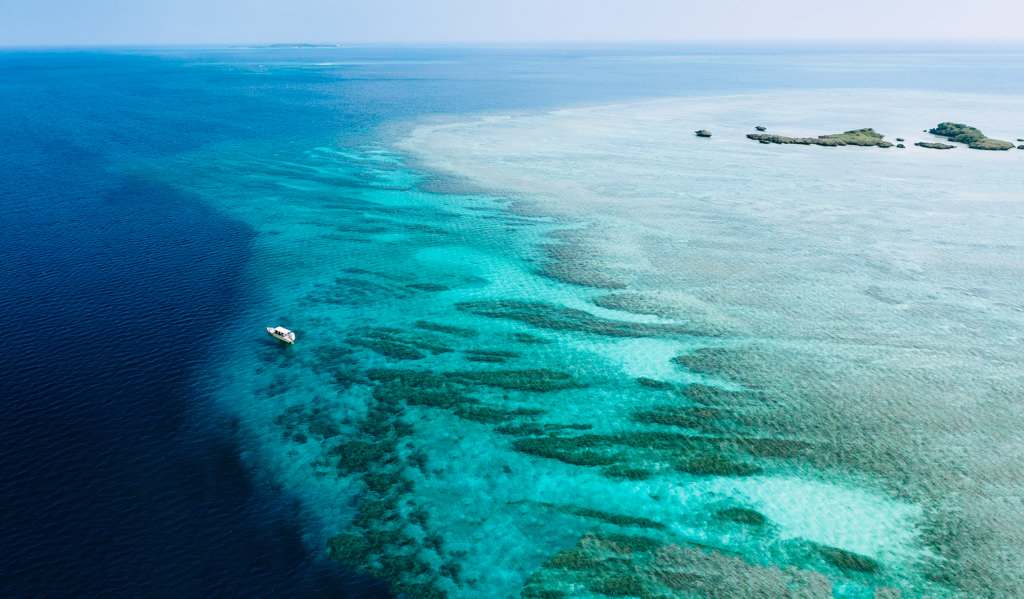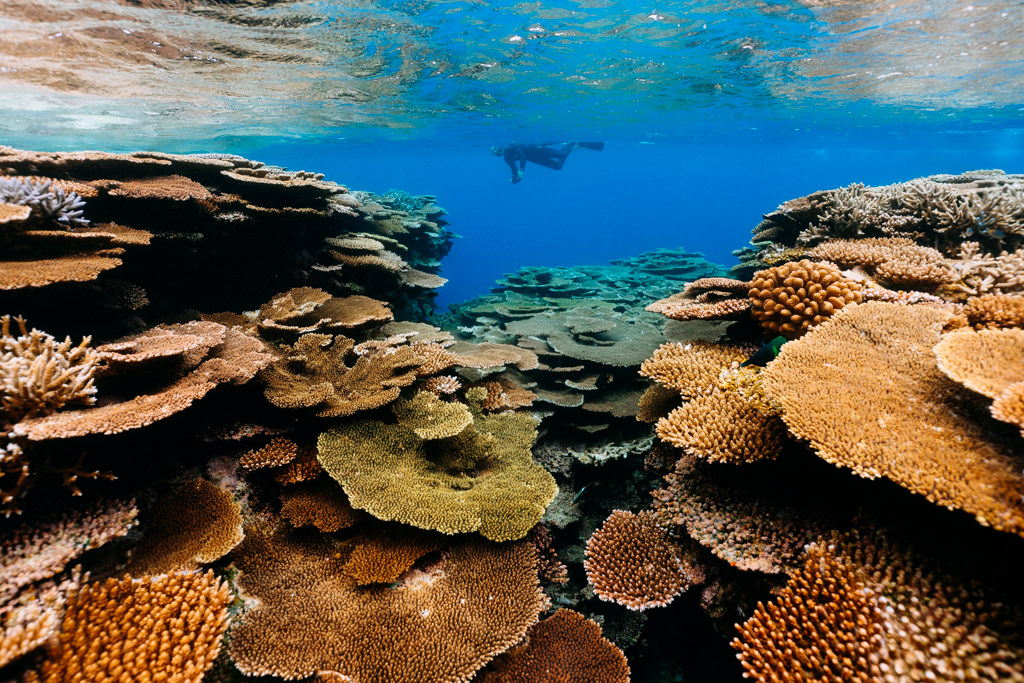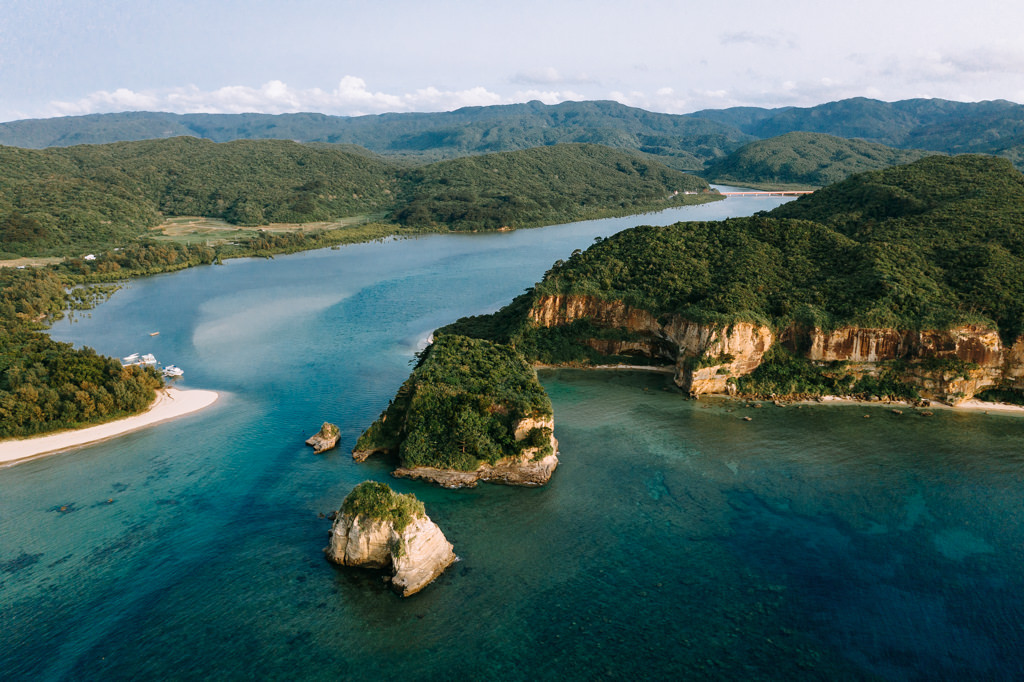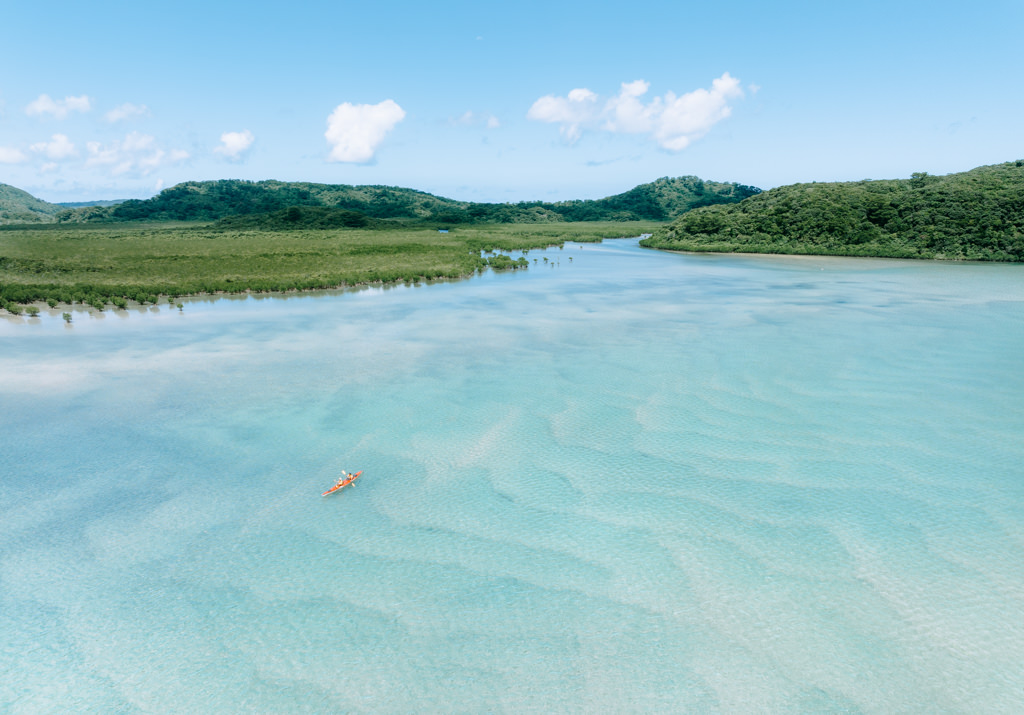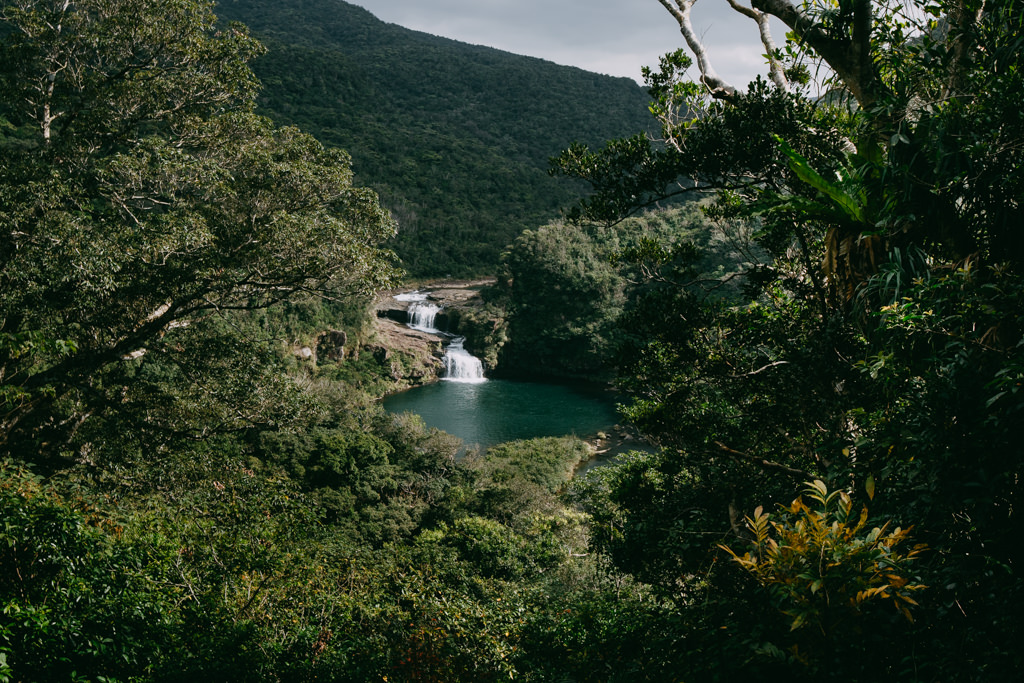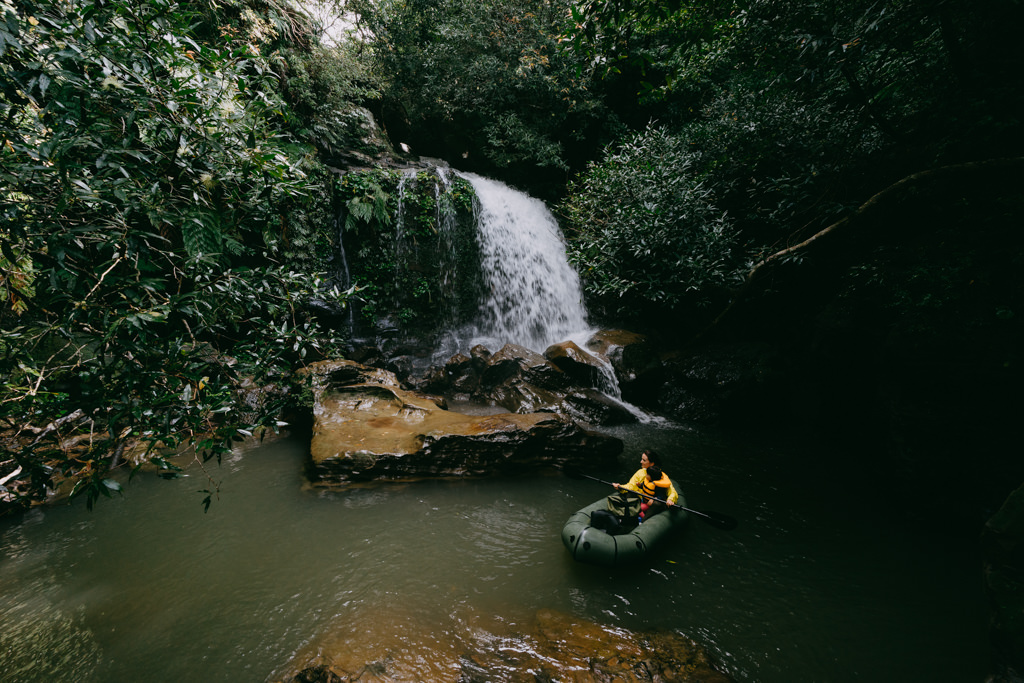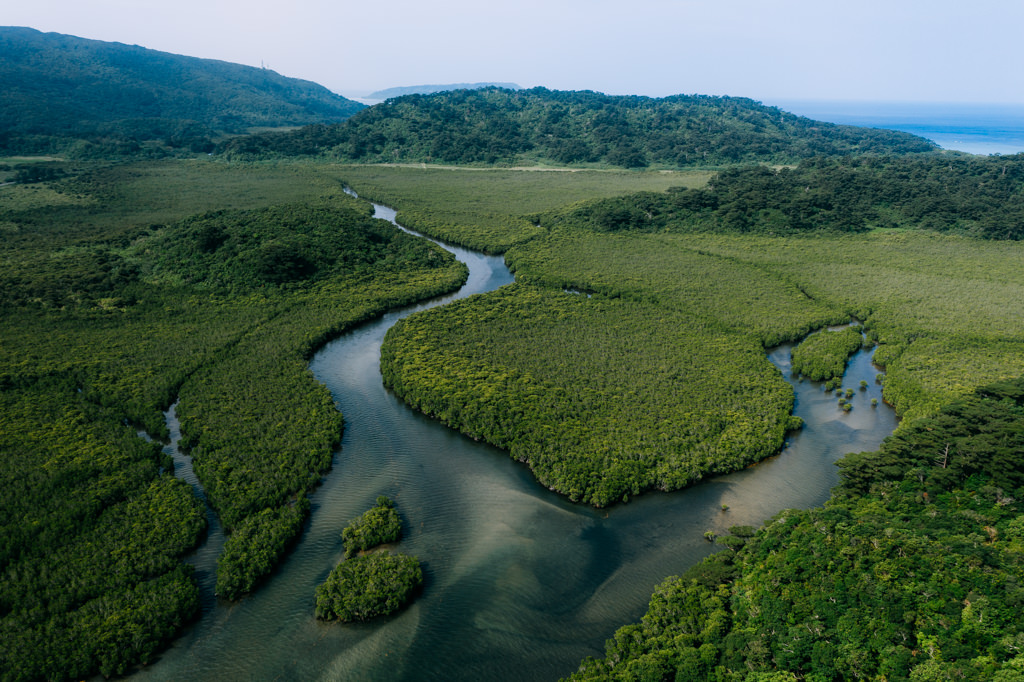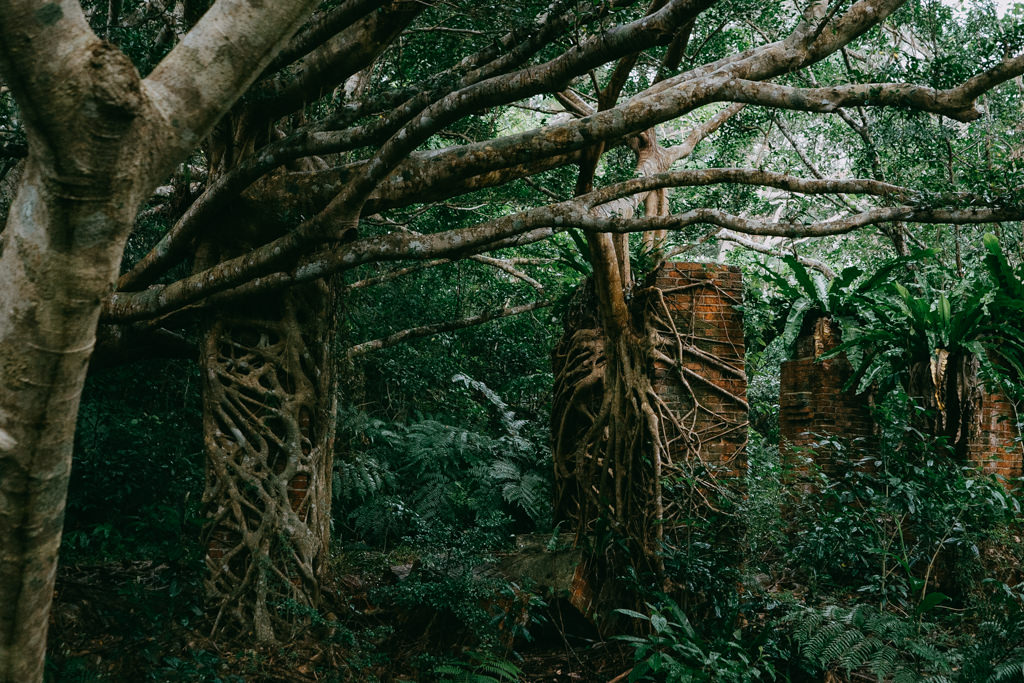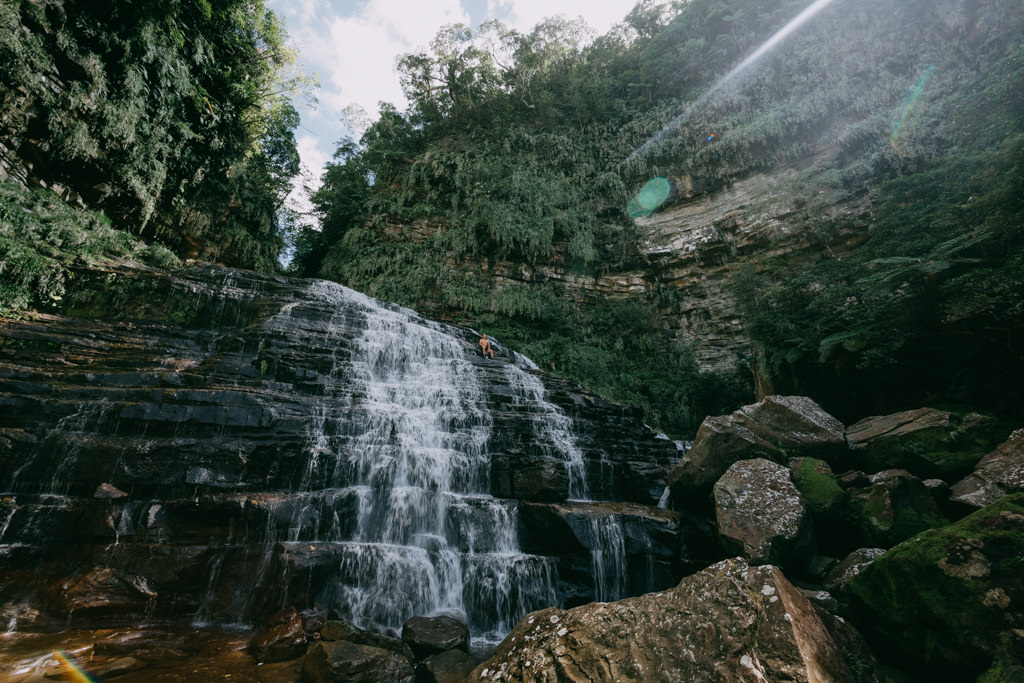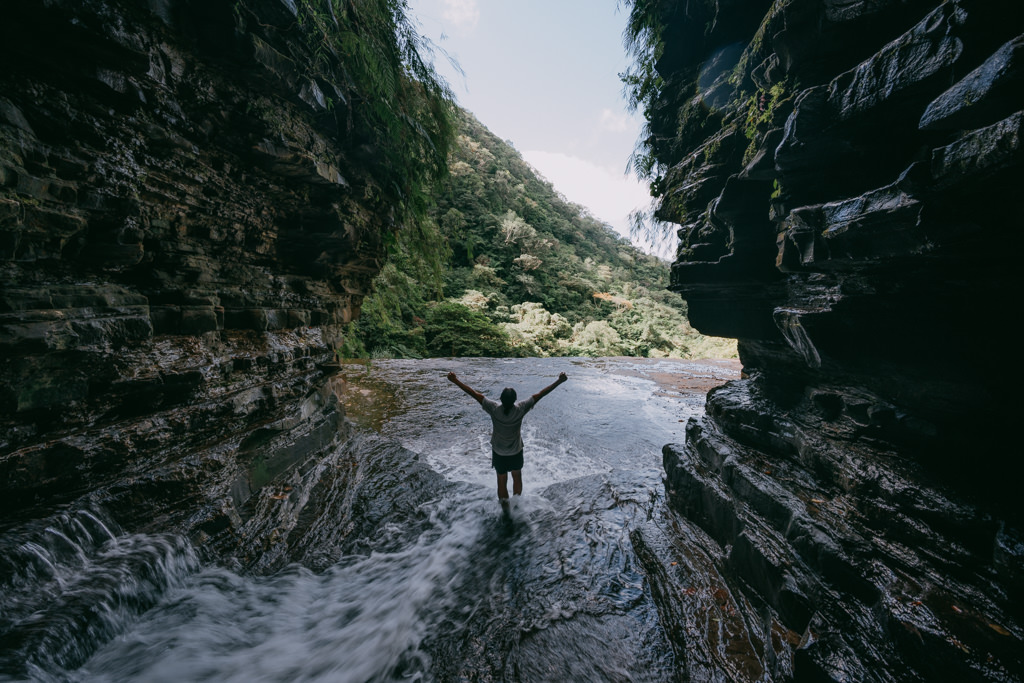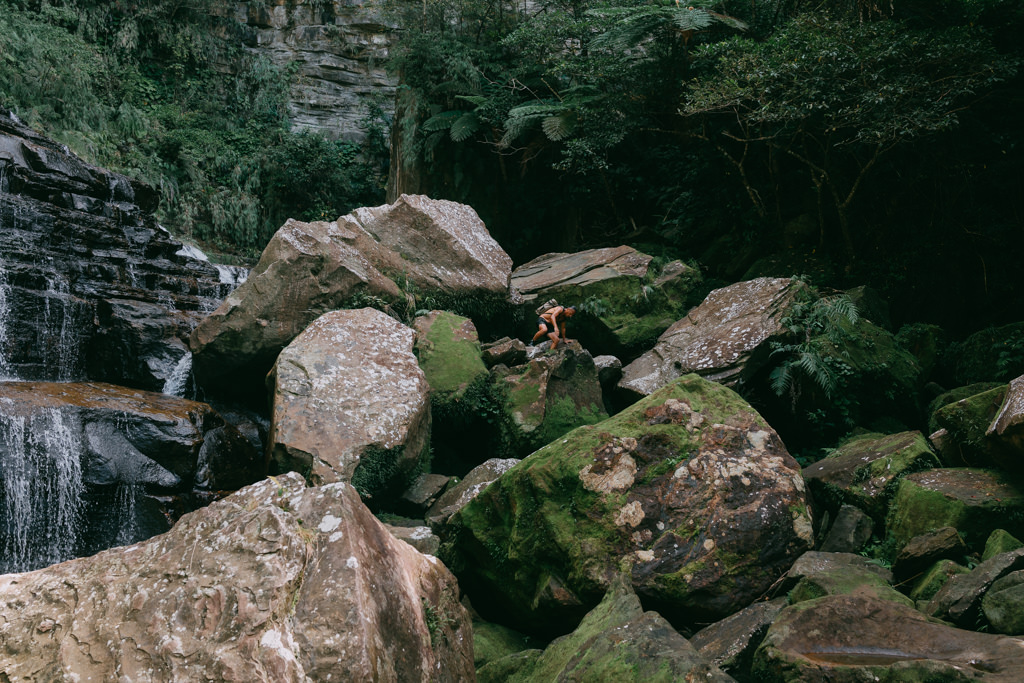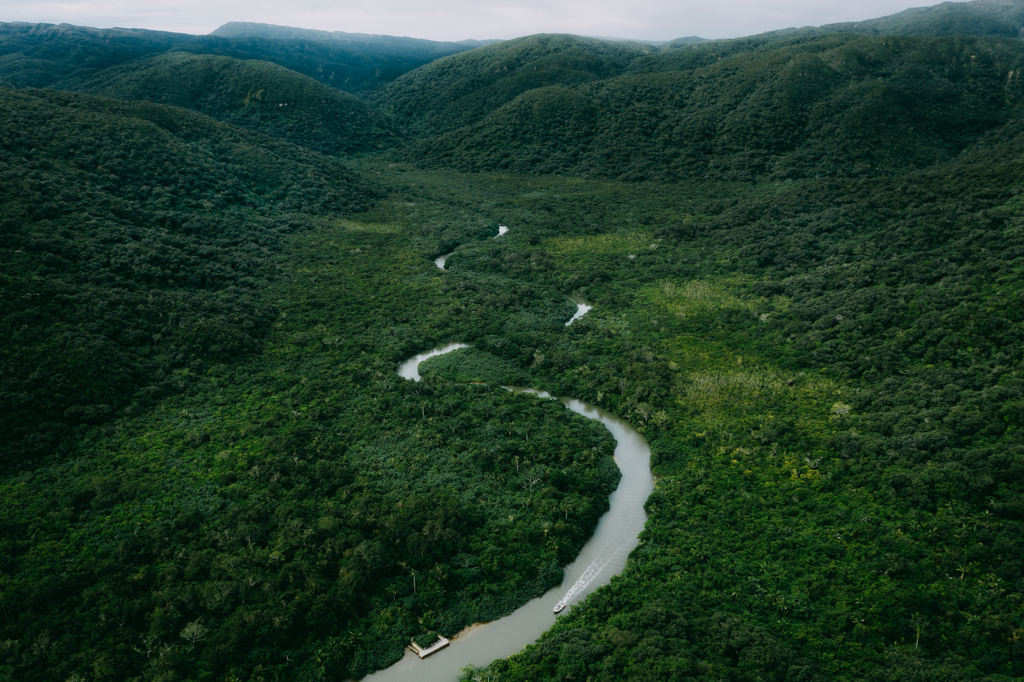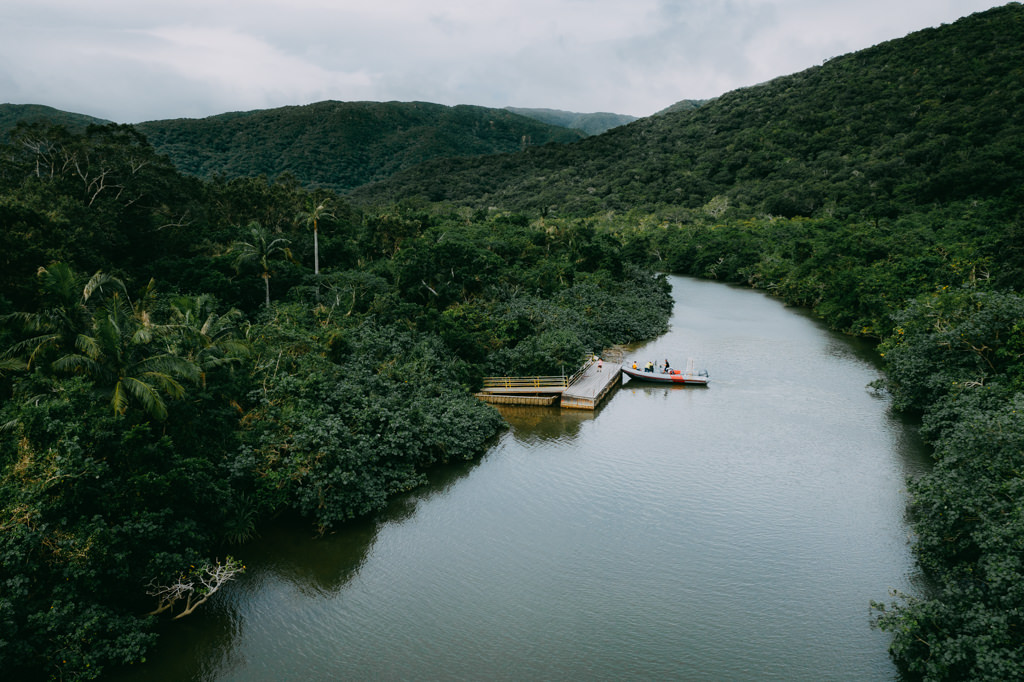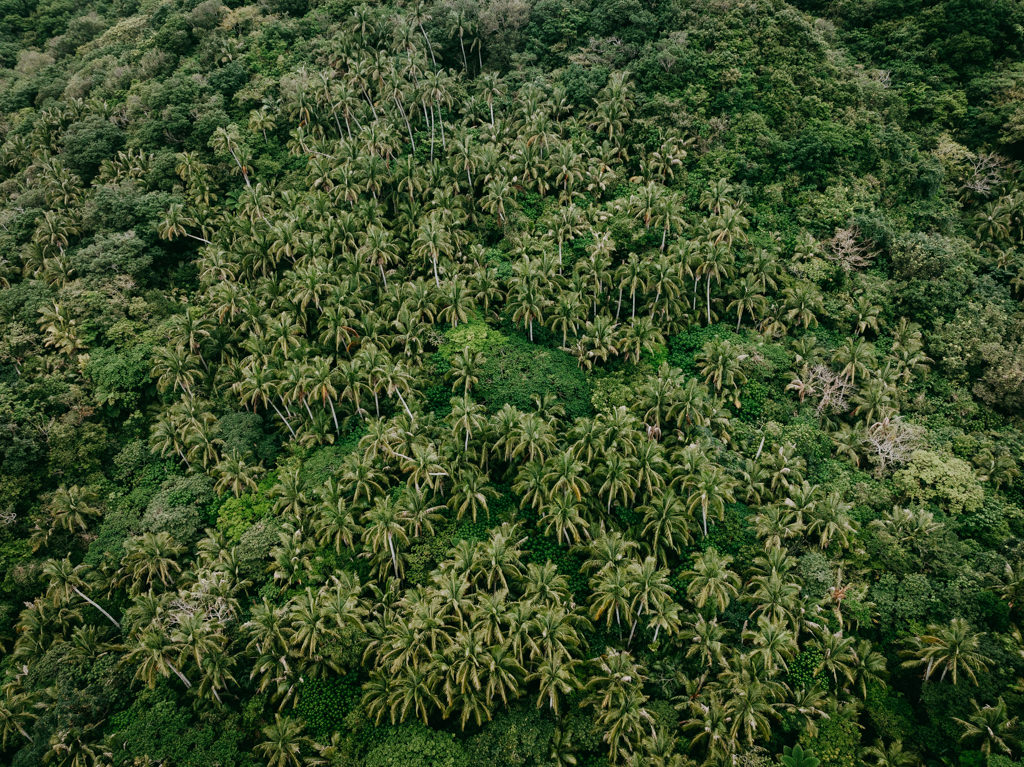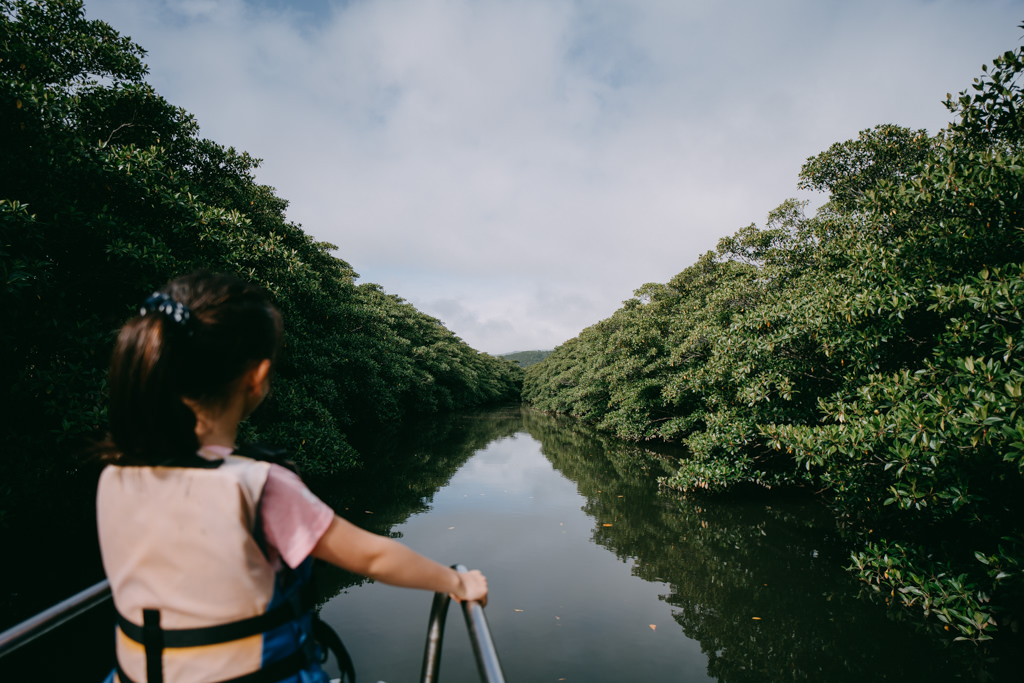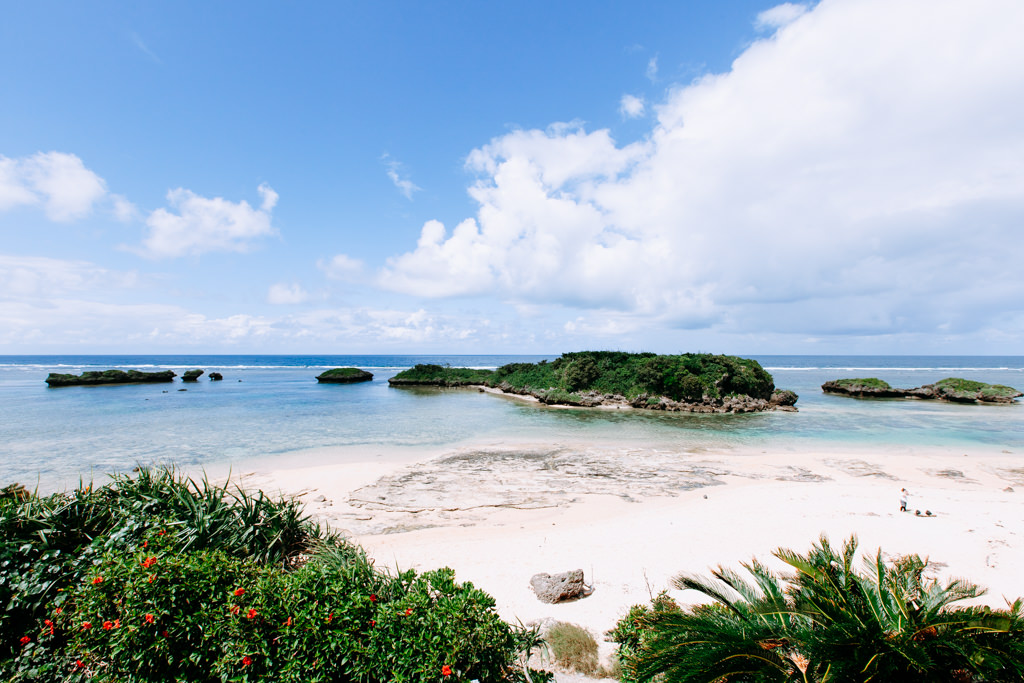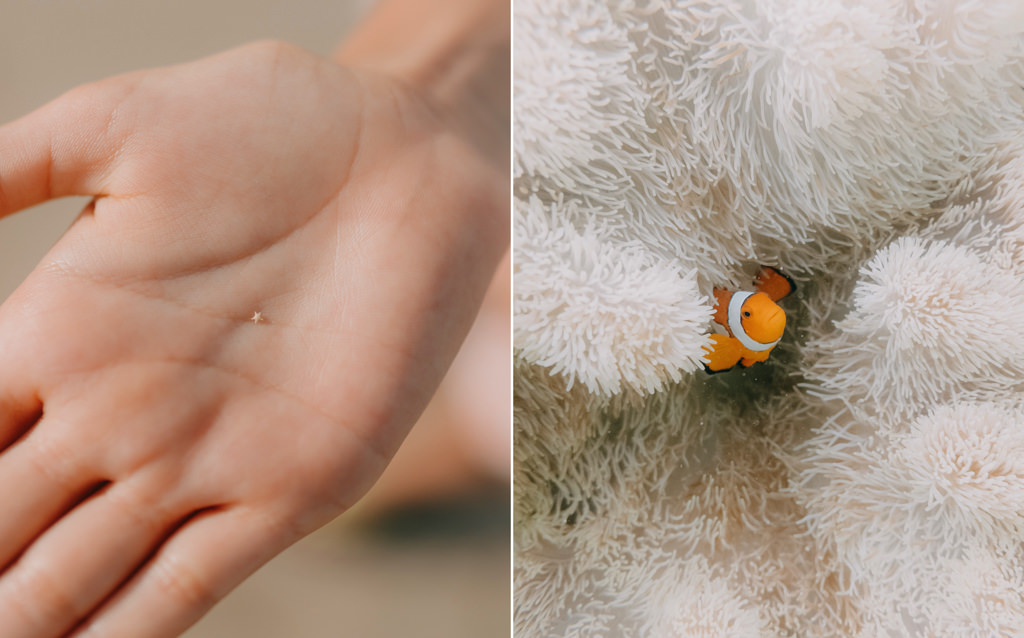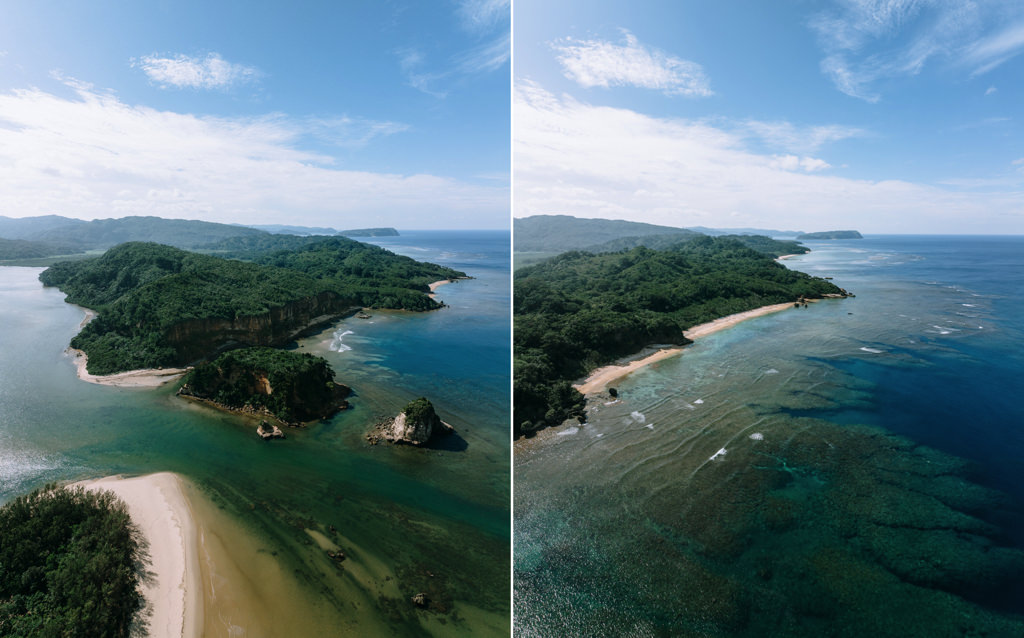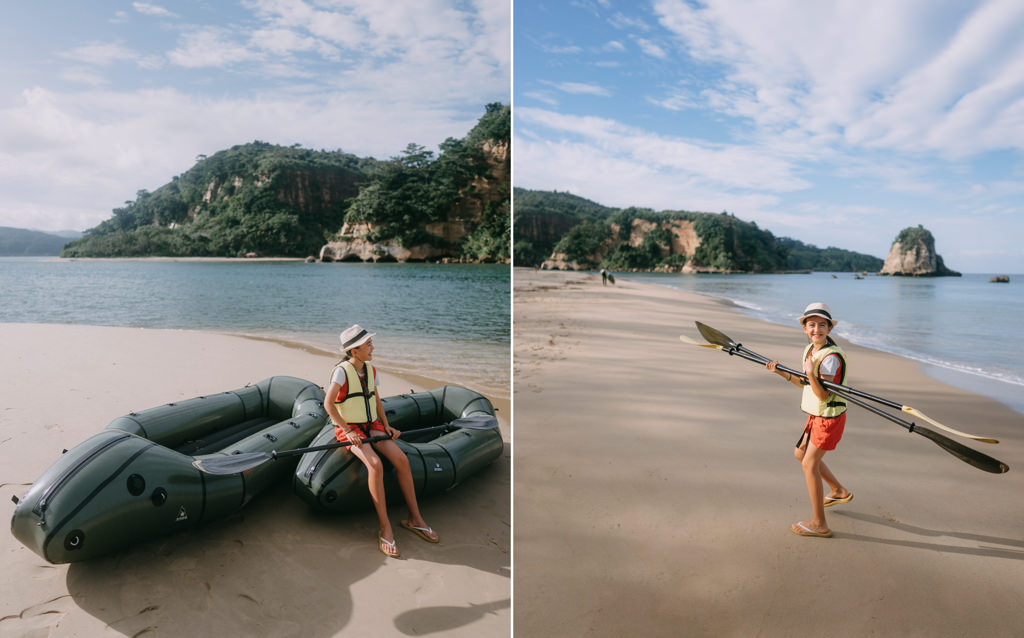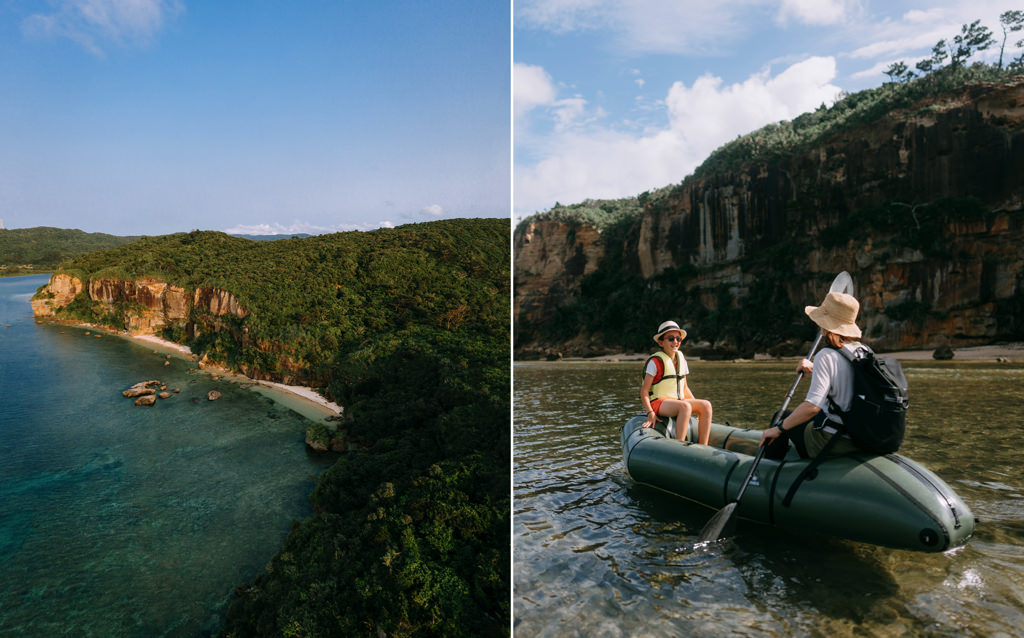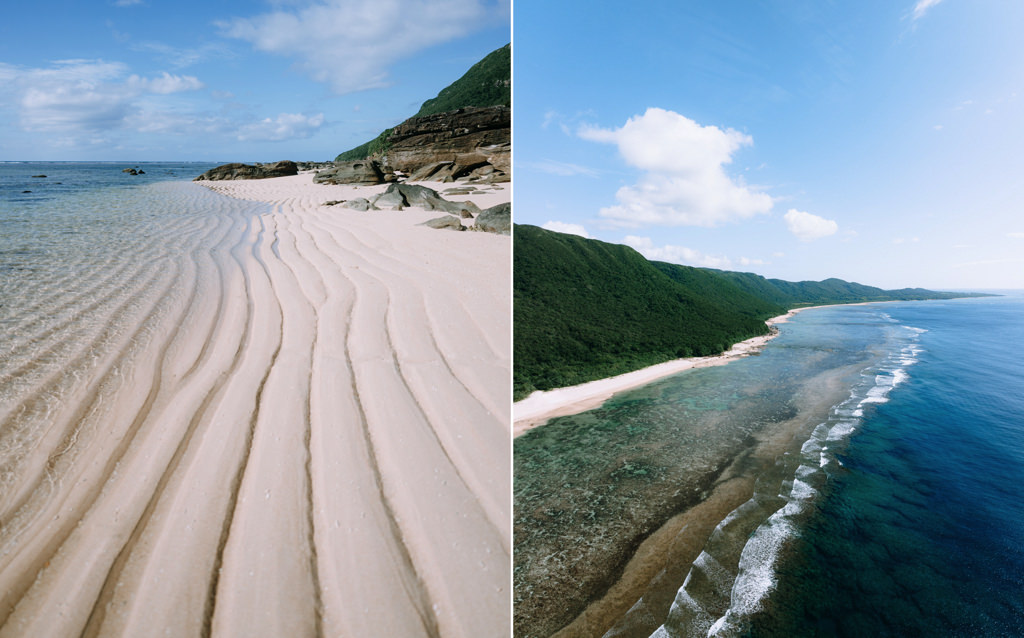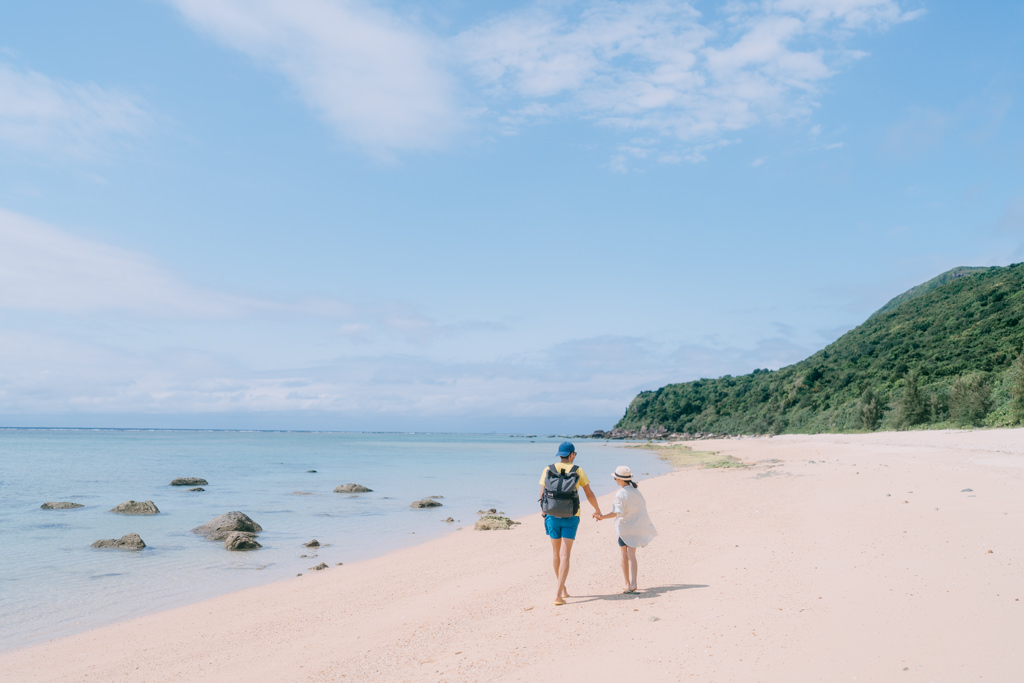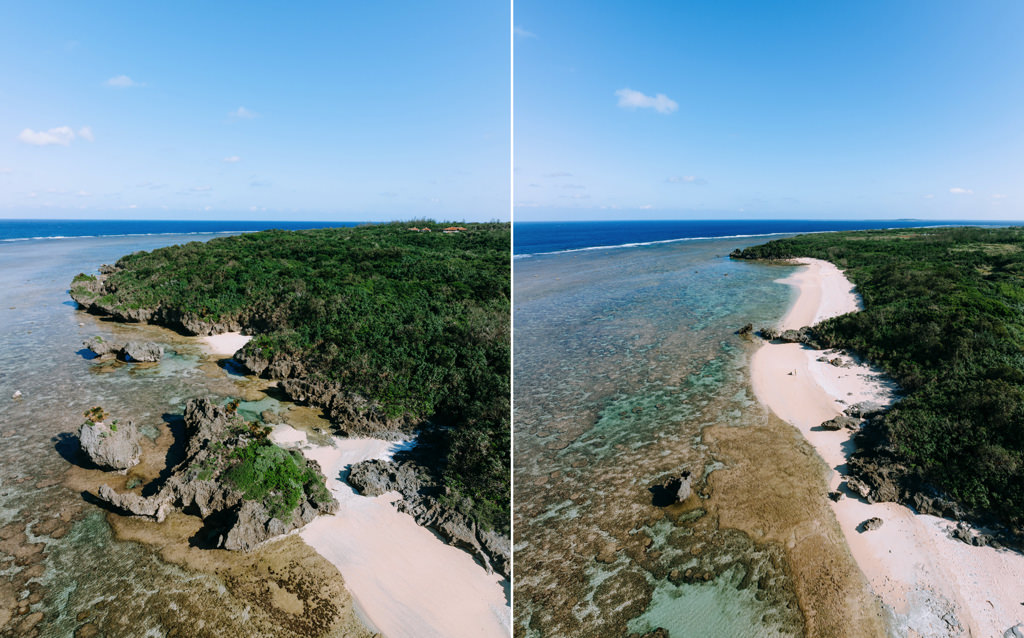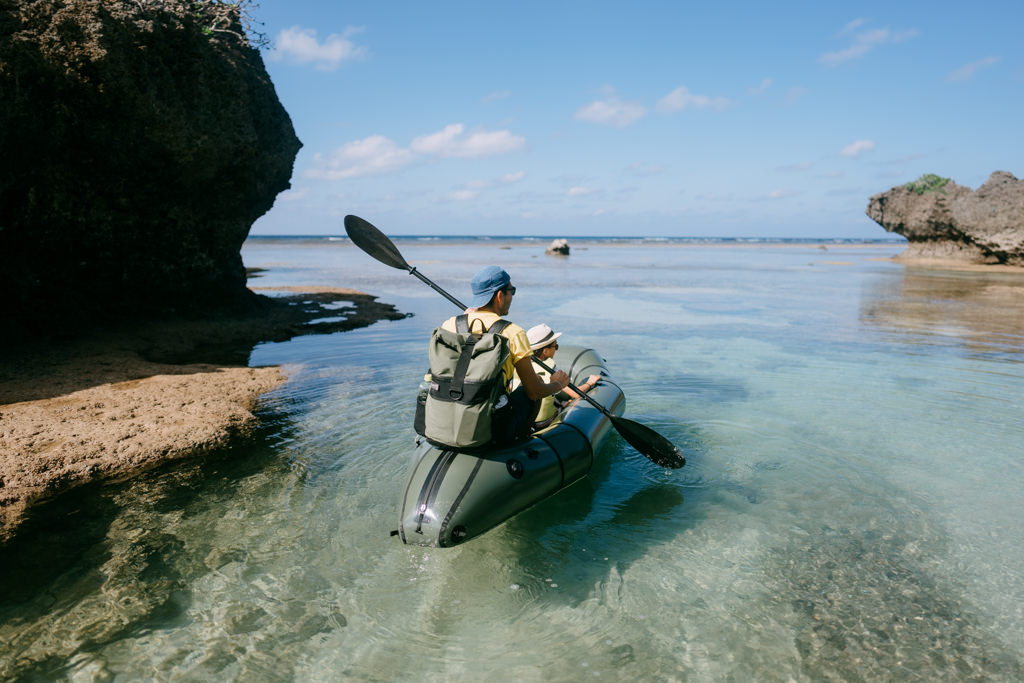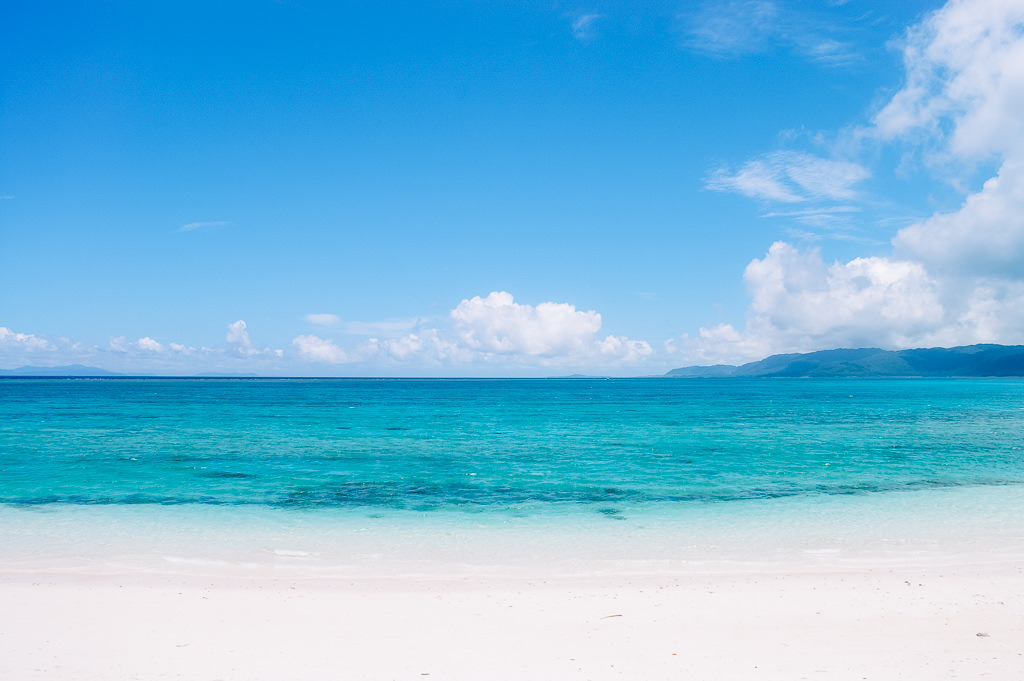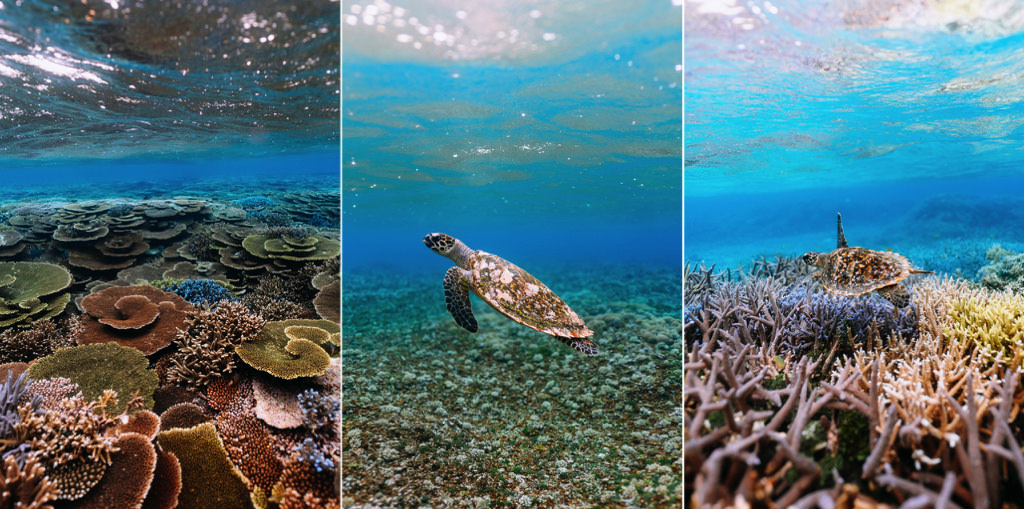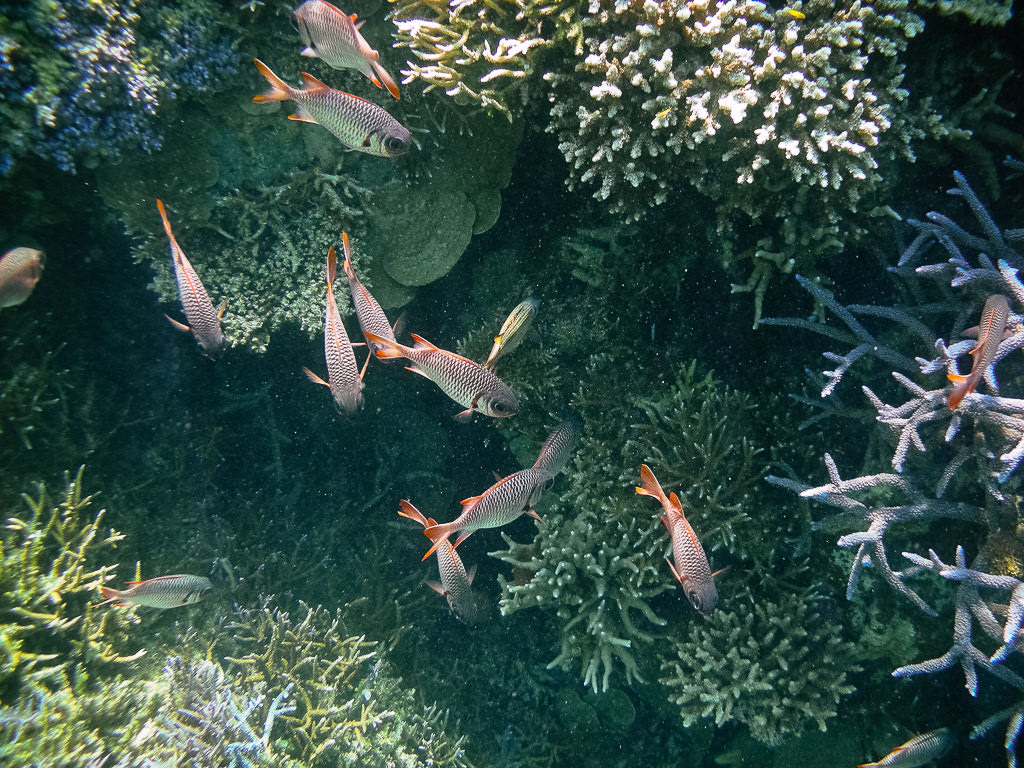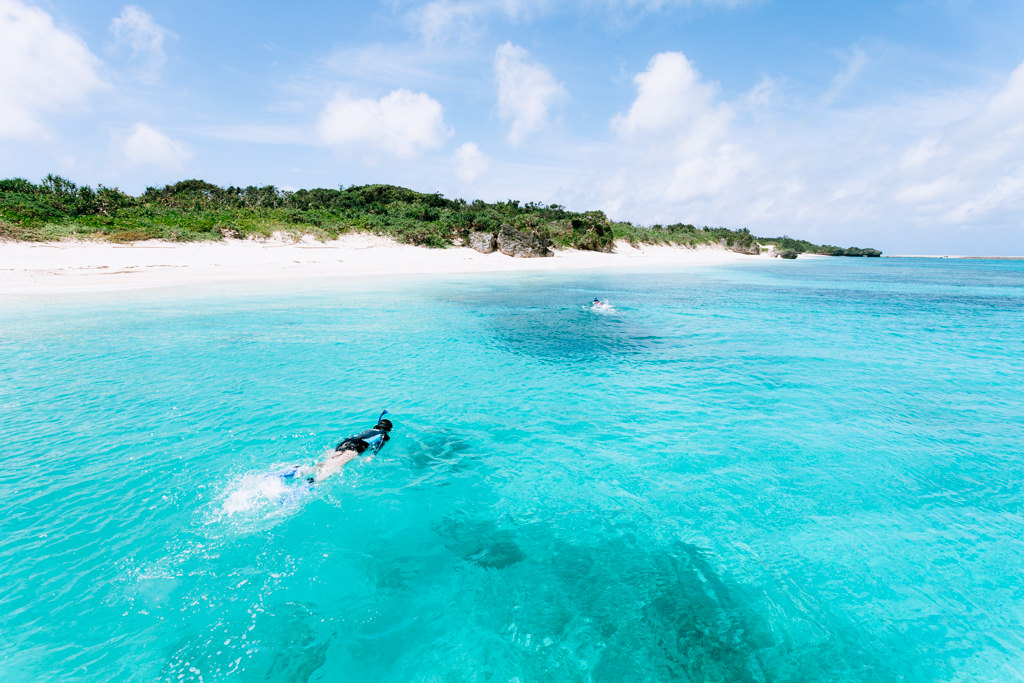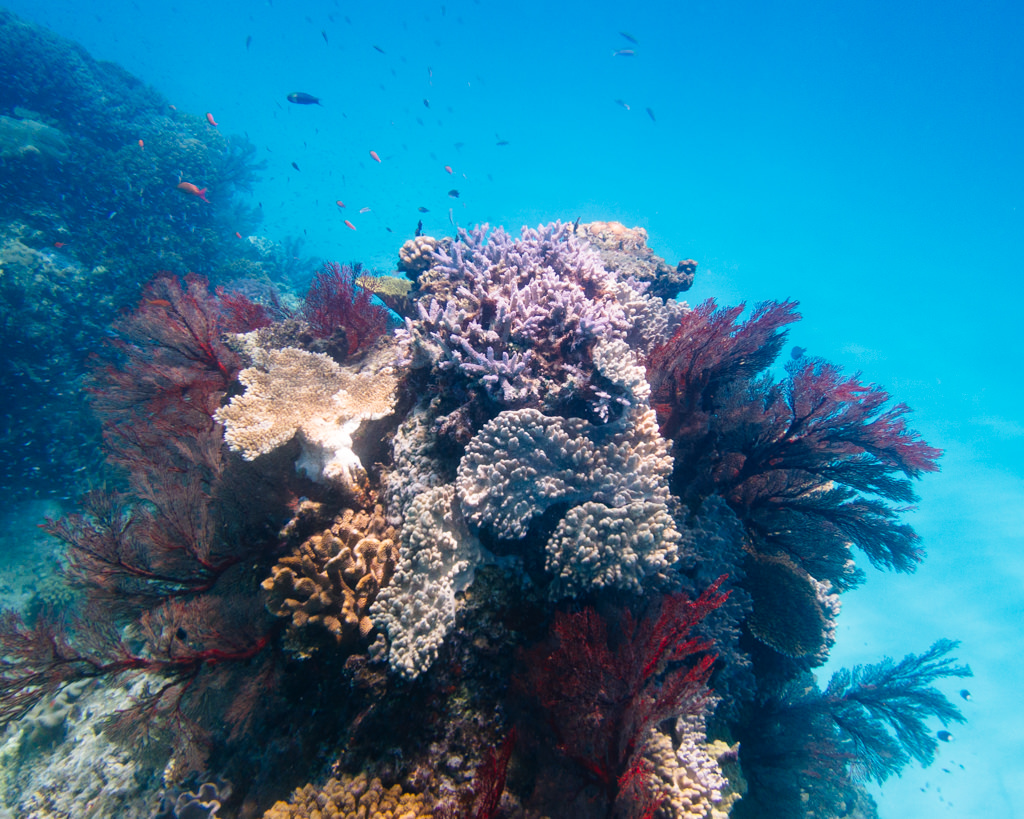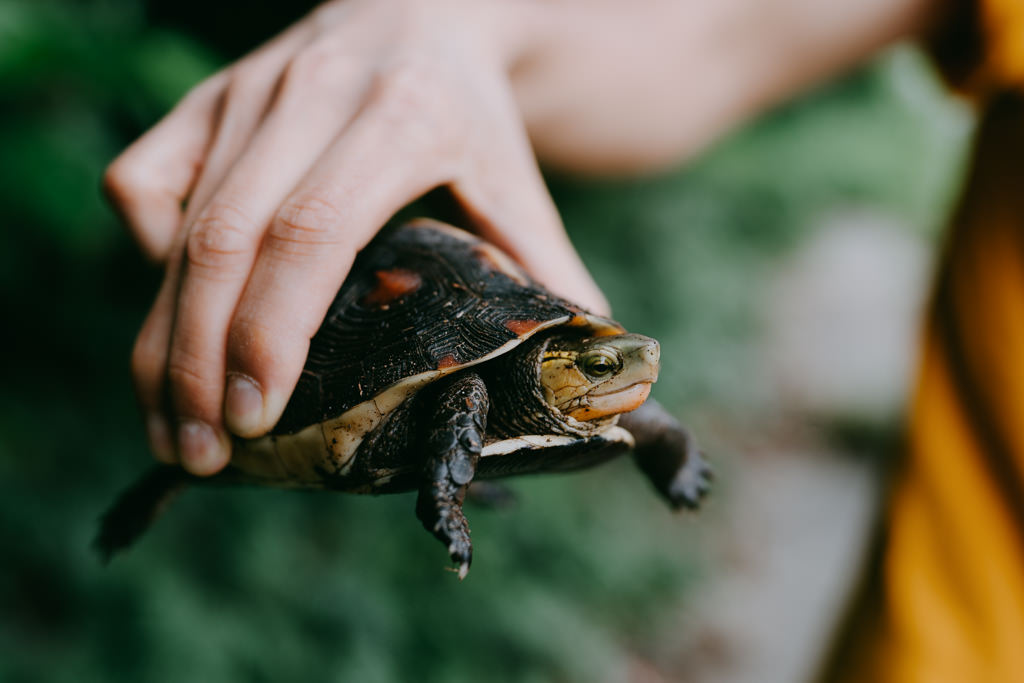Iriomote Travel Guide & Tips | Things to Do on Iriomote Island by Ippei & Janine
< Back to Iriomote Island page
View Exploring Iriomote without a nature guide in a larger map
Iriomote Island of the Yaeyama Islands
Iriomote Island (also known as Iriomote-jima) can be classified as one of Japan’s last frontiers, as is often referred to as the Galápagos of East Asia together with Tokyo’s Ogasawara Islands due to its untouched tropical rainforest with many endemic species (both listed as a UNESCO World Natural Heritage Site). Mostly unexplored, Iriomote-jima is the largest of the Yaeyama Islands and is covered with lush, impenetrable jungle and abundant mangroves. It is surrounded by picture-perfect ocean, both from above and below with its colorful coral reefs, and attracts tourists with a spirit of adventure.
Iriomote is an amazing island, but it’s not for everyone. It’s a real paradise for those with a sense of adventure! Please be aware that Iriomote is 90% covered by dense rainforest (with more tropical plant species than subtropical, unlike Yanbaru subtropical forest on Okinawa Main Island), meaning that it rains a lot all year round! We strongly recommend taking wet weather gear and being prepared to get out and explore no matter the weather.
The Yaeyama Islands are located near the Tropic of Cancer; more south than Taipei and closer to the northern islands of the Philippines than to Okinawa Main Island. If you like jungles as well as beaches, we highly recommend the Yaeyama Island group. The Yaeyama Islands are also perfect for snorkeling and scuba diving as they have one of the largest coral reef systems in Asia.
Over the last 15 years we’ve visited Iriomote Island over 15 times, and we created this travel guide based on our experiences. Our Iriomote Island travel guide is meant for nature lovers who wish to explore Iriomote on their own without taking a guided tour. We regularly update this travel guide but please let us know if you spot any error or any outdated information.
Note: Please read here to find out about the best beach of the day, off-the-beach snorkeling and learn about the ocean garbage problem.
Pinaisara Falls
The longest waterfall in Okinawa Prefecture is best viewed on approach by kayak. There are many kayak tours available. When you get to the waterfall, we highly recommend the 45 minute hike to the top of the waterfall where you can have an amazing view of the mangrove swamp right out to the coral reef. This is the only spot on Iriomote that can get a little busy in the peak season (Golden Week, Obon Week and New Years) due to its popularity and easy accessibility.
Idanohama Beach & Funauki
Take the passenger ferry over to Funauki Port from Shirahama Port (JPY960 per person return), and take a short walk to Idanohama Beach (Ida Beach). On a clear day, this is a spectacular beach. Once on the beach, walk to the headland on the right side and just around the corner is another secluded idyllic beach with an amazing rock wall. The best time is in the morning when you get the shade of the rock wall. Snorkeling from this secluded beach is also great, with a high chance of spotting sea turtles.
Yutsun Falls, Kuura Limestone Caves, Kuura Falls, Geta Falls, Mitara Falls
The northern area has some great trails that you can explore without taking a guided tour. We highly recommend using neoprene felt-sole wading boots (the lightweight type that allows flexible movement of your ankles) as you will need to walk over slippery boulders as well as climb up some waterfalls on many of these hikes.
For those who are not familiar with stream-trekking in the jungle, or don’t have the right shoes, we recommend hiring a trekking guide such as Slow Tempo Adventure Club run by our friends on Iriomote (they can also combine a hike with kayaking).
Note: Malaria on the Yaeyama Islands was eliminated in the 1970’s but there are still mosquitoes that carry Japanese Encephalitis even though there is no more outbreak since the 1960’s (Only 1 out of every 1,000 infected people develop symptoms in Japan nowadays), it’s best to use insect repellent if your adventure team includes an infant or elderly person just to be sure since most westerners don’t have the vaccination.
Tours by Boat
A boat tour is a great way to see many different spots that are completely inaccessible by foot or car. Packraft/kayak would not be impossible for some of these spots, but unlimited energy would be needed! With a boat tour there is the possibility to visit sandy beach caves, jungle waterfalls, mangrove rivers, coral sandbanks, deserted beaches and have a great snorkeling experience within a limited time frame. For a private boat tour, we recommend our friend Kobuchi-san. He has a small boat and does half-day or full-day charter trips. It is best to ask someone who speaks Japanese to call – 090-5294-2144. Kobuchi-san charges JPY30,000 for the private charter plus JPY10,000 per person for a full-day tour (8 hours) including insurance, lunch and drinks, so if you are with a group (up to 7 people) this is good value.
Snorkeling Tour by Boat
Iriomote has amazing offshore coral reefs, so it is essential to take a snorkeling tour by boat or charter a boat to reach them.
Urauchi River Jungle Cruise, Mariudo Falls, Kanpiree Falls and Kaashiku Falls
On the north end of the island, take the “Urauchi River Jungle Cruise” tourist-boat up the mangrove river and hike the easy trail to Kanpiree Falls (about a 40 minute walk from the boat drop-off point). There is a view point of Mariudo Falls about half way. Even though this is quite a touristy route, the hike is beautiful through lush rainforest and it is easy for families with small children. If you are equipped to continue for 2.5 hours further into the jungle after Kanpiree Falls, you can reach a waterfall called Mayagusuku Falls which is known as the most spectacular waterfall on Iriomote Island. If you are paddling Urauchi River with your own packraft or inflatable kayak, we would highly recommend checking out Kaashiku Falls which isn’t accessible by land (see our Iriomote map for the exact location).
While you have your car parked near the jungle cruise boat station, it is worth taking the 15-minute walk to go and see the Utara Tankou mining village ruins. In less than 70 years after this coal mining village of 300 people was abandoned, nature has completely taken over the remaining structures. A boardwalk restricts visitors from exploring too deeply, but you can have an impressive view of the red brick rail structure which has been taken over by banyan fig (strangler fig) trees. It’s hard to believe that there was even a theater in this village!
Mayagusuku Waterfall
Mayagusuku Waterfall is known as the most spectacular waterfall on Iriomote Island. It takes about 3 hours one-way to hike from the drop-off point of Urauchi River Jungle Cruise. It’s essential to take the first boat at 9am to get back in time for the last boat at 4pm. You have to hike fast to make it time for the return boat. The trail is not difficult for those who are used to hiking on jungle trails, but it can be dangerous during/after rain as some parts of the trail are narrow on sheer cliffs. Additionally, water levels can rise significantly with rain, which is worth noting as you will need to walk through the stream in some parts. It’s also essential to cover your ankles as it’s impossible to avoid leeches all year round. If bitten by a leech, it’s the best to cover the leech in salt (to let it fall off by itself) as pulling the leech off forcefully can lead to infection. Many people (including Ippei) simply wait for them to finish sucking the blood and detach themselves as they don’t cause any pain or itchiness. The most risky factor with this trail for us was encountering wild boars on a very narrow trail along the cliff.
For those who want to spend some time at the waterfall or take photos, we recommend chartering a boat earlier than the scheduled boat, for example leaving at 8am. It is ¥3,000 pp (minimum 3 people) with an additional chartering fee of ¥10,000. If you have your own kayak/packraft (and lots of energy!) it is possible to do it all without the use of the boats.
It is required to register your hike by filling out an online form before making the trip to Mayagusuku in case of an emergency. Hiking alone on this trail is not allowed.
Just like other trails on Iriomote, we highly recommend using felt-sole wading boots (the lightweight type that allows flexible movement of your ankles) as you will need to walk over slippery boulders as well as climb up waterfalls.
Unless you are a highly experienced hiker (every year Iriomote sees at least several cases of missing hikers, which include fatal cases), we recommend taking the Mayagusuku Tour, which is a guided tour run by our friend Yosuke. His tours are up to 6 people, and it’s also possible to use a kayak instead of the jungle cruise boat for the Urauchi River part. Most likely there is no other person that knows Mayagusuku better than Yosuke as he goes there at least once a week, apart from the extreme humid season.
Note: Most guided tours to Mayagusuku don’t operate between mid May and early October due to the high risk of heat stroke because of the extreme humidity inside the jungle.
Nakama River
Nakama river runs through Japan’s largest mangrove swamp where you can see six types of mangroves (there are seven types in total on Iriomote). The Nakama river area is located in the southern part of Iriomote, and it often has better weather with less rainfall than the northern part during winter months as the mountains block the passage of the northerly wind rain-producing weather system. We highly recommend exploring the small streams and the upper part of Nakama river by kayak/packraft on your own or taking a private/semi-private boat tour, rather than taking the regular sightseeing boat as it doesn’t take you to the best parts of Nakama river and its smaller streams. There is also an easy trail that takes you to a view point (see our Iriomote map).
Hoshizuna Beach
A rather touristy but quite picturesque beach, with a few small rocky islands which give the beach its charm. Shallow waters make this beach inviting for swimmers and snorkelers. Although there is little coral here, there are quite a few fish including several nests of Nemo fish very close to the beach, and you can also see some big fish if you go to the deeper area around the rocky islands (check Google satellite images). This beach is most famous for its star-shaped sand particles (“Hoshinozuna” means “star sand”). Nice to have an ice cream on the terrace of the cafe/restaurant and enjoy the view too.
Packrafting around Atuku Rock and Deserted Beaches
If you are bringing your own packraft (or inflatable SUP/kayak), we highly recommend paddling from Tsukigahama Beach to the numerous deserted beaches past Atuku Rock, especially in case of a south or southeast wind. You can see thriving coral in the clear water and impressive rock walls while paddling.
Coastal Hiking in the South
If you happen to have a sunny day with a strong north wind during your stay, we highly recommend this beautiful coastal walk on the southern shore. As this coast is directly facing the south, it receives very little ocean garbage from the Great Pacific Garbage Patch because of the current. There are also waterfalls at the end of the beach (a bit of a stream-hike is required). There is also a good snorkeling point (See our Iriomote map). At low tide around full moon days, you can continue to walk from the end of the beach to a fascinating cubically-shaped rock called Tofu Rock.
Secluded Beaches around Unarizaki
In case of a strong east or southeast wind, this area comes in very handy with calm lagoons and numerous idyllic secluded beaches. It’s great for snorkeling with a high chance of spotting sea turtles as these beaches are some of their nesting sites.
Day Trips to Coral Islands with White Sand Beaches
One of the few downsides of Iriomote would be a lack of very white sand beaches since Iriomote isn’t an island entirely formed by emerged coral reefs. If you want to visit beaches with very white and fine coral sand for a day trip from Iriomote, we would recommend Hatoma Island or Aragusuku Island. You can visit Hatoma Island by regular ferry but Aragusuku Island is accessible only with a tour or by chartered boat. Snorkeling around Hatoma Island is excellent with lush pristine coral reefs despite climate change. There are snorkeling day-trip tours available to Hatoma Island from Uehara port (also possible as a day trip from Ishigaki). For a private snorkeling tour to Aragusuku Island, or a customized charter to various snorkeling spots including the amazing spots around Hatoma Island, we highly recommend Marine Service Fushima which is run by our friend, Kuroki-san. He is based on Kuroshima Island, but offers a pick-up and drop-off service by boat from Iriomote and other surrounding islands.
Restaurants, Cafes and Bento
Restaurants and cafes change frequently on Iriomote (check also our Iriomote map for more). Some of our favorites include:
Laugh La Garden(ラフ・ラ・ガーデン)
Laugh la Garden is a casual restaurant on the second floor in the building next to the gas station near Uehara Port. Please check their opening hours/days as they take some random days off. They specialize in Okinawan pork, and burgers. If you don’t know Okinawan black pork, it is truly another thing entirely from what you may know, extremely tasty and very healthy.
Parlor Mimi(Restaurant Parlor Bibi)
There are many places which do a fantastic “Soki Soba” which is a pork bone base broth, with soba noodles topped with pork spare ribs with collagen (it looks like fat but it’s wonderful collagen!). This would be a standard Iriomote lunch for us 🙂 Parlor Mimi is our favorite, located near Uehara Port, but just any casual roadside place is usually great especially for lunch — just look out for the flags. Parlor Mimi is run by fruit growers, known for their premium export-quality mangos. The also serve fresh fruit juice of the season from their farm.
Roco(ロコ)
This casual izayaka-style restaurant specializes in seafood. The menu is slightly more original, with a twist on traditional recipes.
Irumutiya(島のごちそういるむてぃや)
This izakaya is very popular amongst locals. It’s a lively place serving typical local dishes with local produce, such as umi budou (“sea grapes”, seaweed with a grape-like shape and succulent texture), goya champuru (stir-fry of bitter melon with pork and vegetables), Rafute (stewed pork), etc. They can also cook fish that you catch yourself.
Hateruma(泡波と島の味 はてるま)
Hands down the best Ryukyu (Okinawa) restaurant on Iriomote, if not in the entire Okinawa prefecture. They serve traditional Ryukyu Kaiseki (refined multi-course meals) in a tasteful traditional Okinawan house located in Ohara (near Nakama Port). There is just one course available, incorporating local seafood caught on the day by the chef himself, with organically farmed and wild ingredients of Iriomote. It costs around JPY4,000 per person. If the sea is rough on the day, reservations will be cancelled as the chef cannot dive to catch fish. A long drive for dinner if you are staying around Uehara, but it is well worth the trip. Closed on Sundays. Advance bookings are essential.
Ichitaka(一隼)
Great atmosphere and friendly staff with tables outside too. Their pizza is very popular among the locals, however the seasonal dishes are delicious too. It’s a very popular place so reservations are essential.
Cafe Hanazumi(カフェ花ずみ西表島)
This little cafe is run by a sweet elderly lady who is a connoisseur of tea, spices and enzyme drinks. All of her dishes including sweets are delicious. Vegan curry is also available for lunch. She can also do a traditional dinner course using local ingredients (reservations are required a few days in advance).
Shirahama Soba(白浜そば)
This Okinawa soba restaurant is very popular among the locals. Their Gyu soba (Okinawa style beef noodle soup) is highly praised.
Noen Cafe(農園Cafe ファイミール)
This cafe specializes in sweets but they also sell freshly made bento lunch boxes (10:00AM-1:00PM). You can pick up your bento from 7:30AM if you let them know before 7:30PM the night before (via Instagram DM), which is very handy for those who leave early in the morning for their adventure.
“Mujin Hanbai” – Honesty Produce Shops
We love these road-side stalls – you never know what you’re going to find available! Especially great if you are cooking yourself since it is difficult to get any decent fresh produce from the supermarkets on Iriomote, as the locals grow most of their own produce and catch their own fish, then exchange with their neighbors. Just drop the designated amount in the money jar and you’re set to go.
Car Rental
Car rental is essential on Iriomote Island if you want to do some independent exploring. Some people rely on transfers provided by nature guide tour companies, however it is quite limiting. You can rent a small car for about 4,000 yen per day (including insurance) through Iriomote Rent-A-Car, ORIX Rent-A-Car, Yamaneko Rent-A-Car or the Japanese version of Rakuten Travel. Unfortunately most other car rental booking sites don’t cover Iriomote. Best to ask someone who can read Japanese to book. You will need an International Drivers License or JAF translation. We recommend taking a ferry to Ohara port on Iriomote Island (rather than Uehara port) and rent a car from there, regardless of the location of your Iriomote accommodation. Ferries to Uehara port are often cancelled even with a moderate northerly wind or distant typhoon.
When driving on Iriomote Island, please take care to be on the lookout for wildlife. There can be creatures crossing the road, such as wildcats, box turtles, boars, coconut crabs, rail birds, snakes, etc.
The car ferry in-between the Yaeyama Islands is no longer operating everyday. Currently they operate just 2-3 times a week. Most car rental shops don’t allow cars on a car ferry for many reasons such as insurance and sudden weather changes (car ferries are prone to more cancellations because of bad weather as they cannot run inside the lagoons).
Accommodation
Iriomote is becoming much more popular in recent years, and there are many new boutique hotels and “minshuku” (simple Japanese-style B&B rooms) which are listed on international hotel booking sites nowadays. Here are some examples.
Boutique-style in the jungle: Nilaina Resort
With just four rooms, this place books out quickly but it is worth securing at least a night here. Set within the jungle, with views overlooking the ocean. Rooms are comfortable with private balconies giving the true feeling of being in the jungle. Big sliding doors allow you to sleep with just the fly-wire and listen to the night sounds of the jungle. Depending on the package, it is from around JPY11,000 per person per night, with breakfast included (depending on the season).
https://nilaina.com
Boutique-style in front of the beach: Villa Unarizaki
Villa Unarizaki is located in the lovely Unarizaki area with a private cove beach, and is sheltered from a north wind. They have 12 rooms (all directly accessible and open to the garden area and beach). It is from around JPY12,000 per person per night, with breakfast included (depending on the season). There are several restaurants within a walking distance for dinner, including the restaurant of their sister hotel, Il Mare Unarizaki which is a few minutes walk from Villa Unarizaki.
https://www.unarizaki.com/villa/
Boutique-style in front of the beach: Luana Mele
Located right in front of Hoshizuna Beach, Luana Mele is a cozy and comfortable place with just four rooms (each with a terrace). It is from around JPY10,000 per person per night, with breakfast and dinner included (depending on the season). Luana Mele is also pet-friendly.
https://www.luanamele-iriomote.com
Cheap & basic: Minshuku Mariudo
Tatami rooms with a shared bathroom, unbeatable value with breakfast and dinner included. Gorgeous lawns out the front to relax after a day of adventure. Around JPY6,500 per person per night.
https://iriomote.mariud.com
Great for groups: Irunti Futademura
Basic wood cabins which are run by the small village where they are located (Hoshidate Mura Village). These no-frills cabins can house around 8 people per cabin and have basic cooking facilities. Revenue made from the cabins goes straight back into the village.
http://travel.rakuten.co.jp/HOTEL/128367/gallery.html
Weather
Located at the same latitude as The Bahamas, Iriomote Island has a Tropical Rainforest climate as opposed to Humid Subtropical climate of Okinawa Main Island and the other northern islands of Okinawa Prefecture. The average yearly high temperature is 26.6°C (79.9°F), and the average yearly low temperature is 21.7°C (71°F), making the mean annual temperature of 24°C (75°F) which is the same as Oahu of the Hawaiian Islands. The climate is similar to Southern Taiwan, warmer than Hong Kong and Northern Taiwan due to the warm ocean current around Iriomote. The annual average humidity reaches about 80%, which makes the feeling temperature very different from dry places with the same mean annual temperature such as Townsville in Queensland, Australia. The sea temperature is warm all around the year, ranging between 22°C (72°F) and 31°C (88°F). The rainy season on Iriomote is usually between mid May and mid June (it can be early/late by up to 10 days depending on the year) but it rarely rains all day. For most of the Yaeyama Islands, often it’s just a quick downpour in-between blue sky during the rainy season (Ishigaki has over 1.5 times more sunshine hours than Okinawa Main Island during the rainy season) but Iriomote is an exception due to the mountains covered by rainforest. Even though it rarely rains all day on Iriomote during the rainy season, it can be overcast all day (except for some of the coastal areas which tend to be more sunny in general). The core season for typhoons/tropical storms is August-September but some years have very few typhoons/tropical storms while other years have many typhoons/tropical storms even as early as May or as late as November. However, at least one typhoon/tropical storm hits Iriomote during August or September every year. Usually a typhoon/tropical storm affects the weather only for a few days and you get beautiful clear blue sky as soon as the typhoon passes away. It’s impossible to predict the typhoon even at a closer date as the typhoon path can totally change even just a few days before the initially predicted landfall time.
Note: Unfortunately all international weather forecasts for Ishigaki/Iriomote are inaccurate (including weather histories), such as all the default weather apps on smartphones including iPhone, Accuweather, Windy, etc. They are almost always a few Celsius degrees lower than the actual temperatures measured on Ishigaki/Iriomote (especially during winter), and often the forecast can be completely wrong since they don’t have access to the proprietary data from both Ishigaki weather station owned by JMA (Japan Meteorological Agency) and JMA’s supercomputers.
We recommend this weather forecast using the JMA’s proprietary data (It’s in Japanese with Celsius but it’s straightforward). There is no weather forecast specifically for Iriomote but the Ohara area of Iriomote is pretty much the same as Ishigaki, while the Uehara area of Iriomote during winter (with northerly wind) is often a couple of Celsius degrees lower with more clouds than the Ohara area.
Ishigaki weather forecast:
https://forecast.weathermap.jp/?point=A94081#week10_box
(Accuracy of the forecast is shown as A,B,C,D,E. A is the highest accuracy while E is the lowest).
The weather on any southern Japanese island, however, is so unpredictable that weekly weather forecasts (even two days ahead) should really be used as a guide only. The conditions can also be very different even on the same island between north and south or mountains and coastal areas.

